
Abandoned & Little-Known Airfields:
Pennsylvania: Western Philadelphia area
© 2002, © 2025 by Paul Freeman. Revised 8/10/25.
This site covers airfields in all 50 states: Click here for the site's main menu.
____________________________________________________
Please consider a financial contribution to support the continued growth & operation of this site.
Hatboro Airport (revised 6/14/25) - Keystone Helicopter West Chester Heliport (revised 8/10/25) - Paoli Airport / Main Line Airport (revised 8/9/25) - Patco Field (revised 1/9/25)
Pitcairn Field (1st location) (revised 8/12/19) - Pitcairn Field (2nd location) (revised 12/8/24) - NAS Willow Grove (revised 8/10/25) - Valley Forge Airport (revised 9/30/22)
____________________________________________________
40.178, -75.088 (West of Philadelphia, PA)

The letterhead of Hatboro Airport's L-H Air Service, from an 11/7/39 letter (courtesy of Alex Myers).
The date of establishment of this small general aviation airport has not been determined.
The earliest reference which has been located to Hatboro Airport was the letterhead of L-H Air Service, from an 11/7/39 letter (courtesy of Alex Myers).
In the letter, R.T. Leadbetter provided a check for $30 for the hangar rental for 3 Piper Js (NC21693, NC25039, and NC25041).
Hatboro Airport was not yet depicted on the 1939 NY Sectional Chart.

A circa 1930s-40s matchbook for Hatboro Airport's L-H Air Service (courtesy of Alex Myers).

The earliest aeronautical chart depiction which has been located of Hatboro Airport was on the March 1940 NY Sectional Chart.
It depicted Hatboro as a commercial/municipal airport, located just to the east of Pitcairn Field.

The earliest photo which has been located of Hatboro Airport was a 10/8/42 aerial view (from PennPilot).
It showed the field to consist of a rectangular grass plot, with an airport circle marking in the center, and on the northeast side was a row of no less than 16 T-hangars.
There were no aircraft visible on the field, possibly due to wartime restrictions on small civil airports near the coasts.

The last aeronautical chart depiction which has been located of Hatboro Airport was on the November 1945 NY Sectional Chart.
Compared to the 1940 chart, Hatboro's depiction had been downgraded to that of an auxiliary airfield,
and by then it was also uncomfortably close to NAS Johnsville (less than a mile to the northeast).
Hatboro Airport was definitely closed at some point between 1945-46, as it was no longer depicted on the 1946 NY Sectional Chart or the 1946 USGS topo map.

A 5/2/48 USGS aerial view showed the site of Hatboro Airport only a few years after its closure.
The majority of the field remained open, with houses having been built along the west side, but the airport circle marking remained in the center.
The row of 16 T-hangars previously seen had evidently been removed at some point between 1942-48.
A 1950 aerial view showed that houses had covered the site of Hatboro Airport.

A 2023 aerial photo showed no recognizable trace remaining of Hatboro Airport.
Thanks to Alex Myers for pointing out this airport.
____________________________________________________
Valley Forge Airport, Valley Forge, PA
40.128, -75.423 (West of Philadelphia, PA)
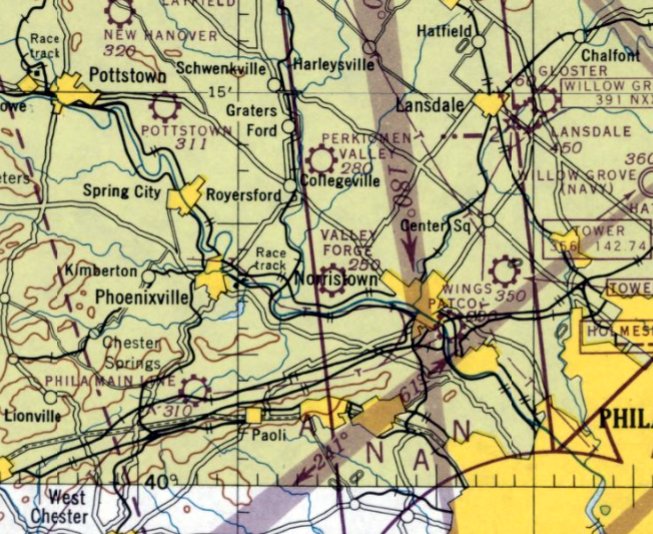
Valley Forge Airport, as depicted on the July 1946 NY Sectional Chart.
This small general aviation airport was evidently established at some point between 1945-46
(like hundreds of other small airports in the US post-WW2 aviation boom),
as it was not yet depicted on a 10/8/42 aerial view or on the November 1945 NY Sectional Chart.
The earliest depiction which has been located of Valley Forge Airport was on the July 1946 NY Sectional Chart.
It depicted Valley Forge Airport as a commercial/municipal airport.
Glen Cole recalled, “My stepdad, Jim Piacitelli, owned & developed Valley Forge Airport & also taught me to fly.”
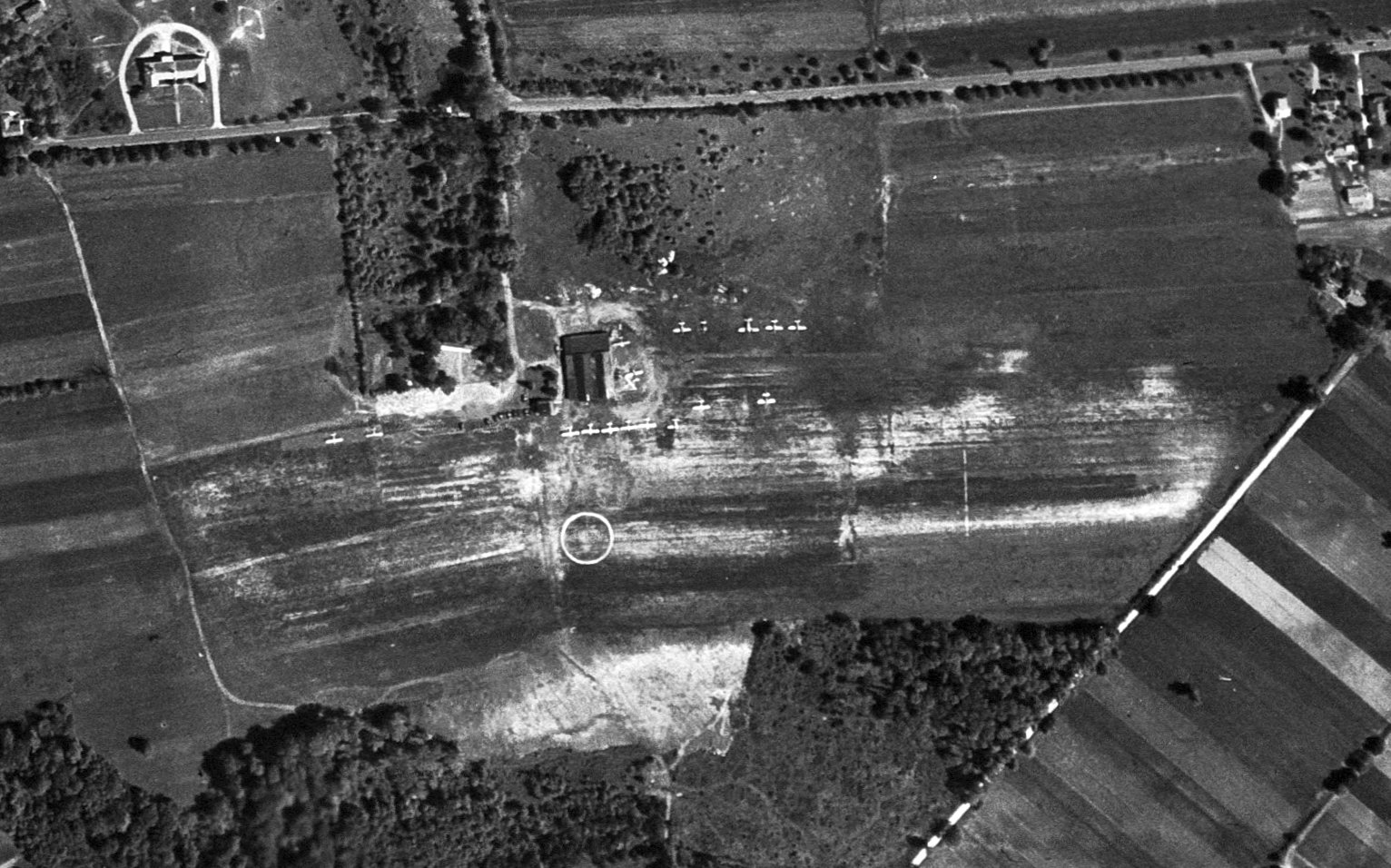
The earliest photo which has been located of Valley Forge Airport was a 5/20/48 aerial view,
which depicted it as an irregularly-shaped grass field, with an airfield circle marking on the center,
and at least 15 light single-engine aircraft parked around a hangar on the north side.
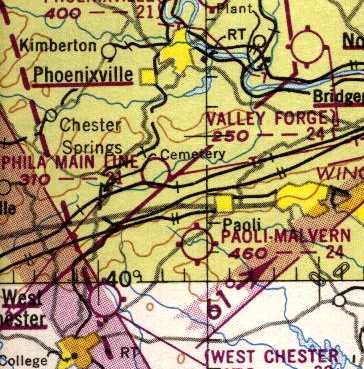
The 1950 NY Sectional Chart depicted Valley Forge Airport as having a 2,400' unpaved runway.
A 1950 aerial view depicted perhaps the start of a trend of the declining fortunes of Valley Forge Airport,
with the number of aircraft parked on the field having decreased to 8.
A swimming pool had been built on the northwest side of the airport property, which would presage its future land use.
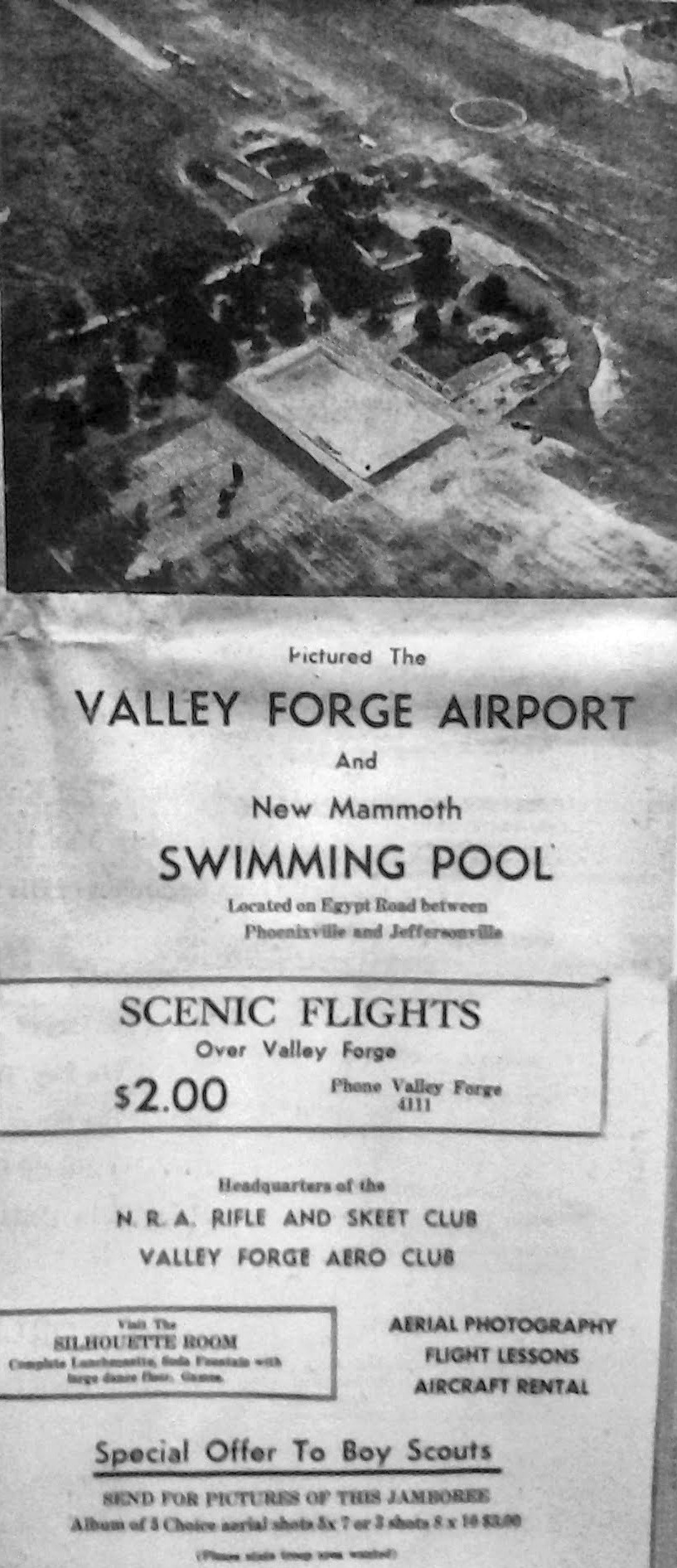
A 1950 or 1957 advertisement for Valley Forge Airport (photographed by Maggie Leber on the wall of the Pottstown Airport FBO in October 2013)
featured an undated aerial view looking southeast, showed several planes on the field, the hangar, the airfield circle marking, and the swimming pool in the foreground.

The 1951 USGS topo map depicted Valley Forge Airport as an irregularly-shaped property outline, with a few small buildings & a swimming pool on the north side.
The last photo which has been located showing aircraft at Valley Forge Airport was a 1951 aerial view.
It showed the number of aircraft visible on the field had decreased again, to only 5.
Fred DeJacma recalled, “Valley Forge Airport... I soloed there in 1955.”
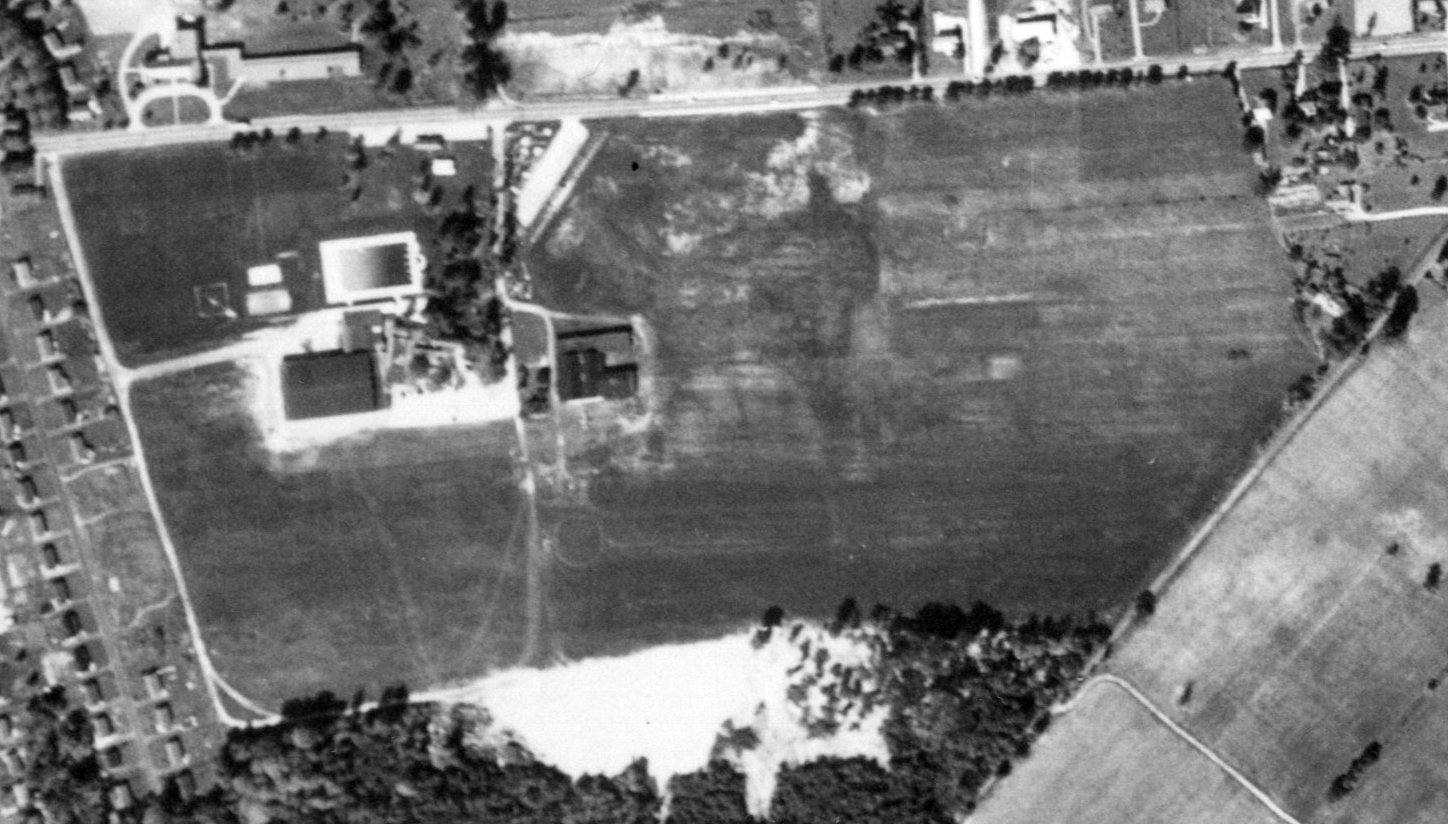
Valley Forge Airport may have been closed at some point between 1955-57, as a 10/4/57 aerial view shows the field devoid of aircraft.
The airport was still intact though, including the hangar, and the airfield circle marking.
According to Glen Cole (stepson of Valley Forge Airport owner Jim Piacitelli), the airport was sold to General Washington Country Club in 1960.

The last aeronautical chart depiction which has been located of Valley Forge Airport was on the 1963 Philly Local Aeronautical Chart, which depicted it as having a 2,300' unpaved runway.
The airport may already have been closed by that point, though.
Valley Forge Airport was evidenty closed by 1964, as it was no longer depicted on the 1964 NY Sectional Chart.
A 1965 aerial view showed a golf course had covered the site of Valley Forge Airport,
and the former hangar had been replaced by a smaller building, erasing the last trace of this little grassroots airport.
The 1983 UGS topo map labeled the site of Valley Forge Airport as the Washington Country Club.

A 2016 aerial photo showed the property outline is the only remaining trace of Valley Forge Airport.
Thanks to Fred DeJacma for pointing out this airport.
____________________________________________________
Keystone Helicopter West Chester Heliport, West Chester, PA
40.02, -75.58 (West of Philadelphia, PA)
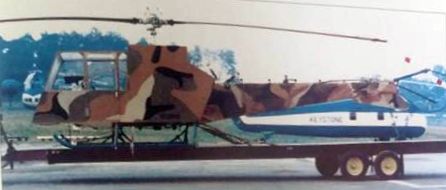
A 1974 photo of a sole Bell 47 helicopter modified with anti-reflective canopy panels at Keystone Helicopter West Chester Heliport.
This is the fascinating story of an innovative helicopter operator/modifier.
According to former Keystone Helicopter employee Ken Morrison, “Keystone was founded by Peter Wright Sr in 1953 & was based at Atlantic Aviation at PHL
until 1972 when we moved to land Peter had bought in Chester County PA.
My first landing there was 9/5/72.”
The earliest dated photograph which has been located of the Keystone Helicopter West Chester Heliport
was a 1974 photo of a sole Bell 47 helicopter modified with anti-reflective canopy panels under an Army contract -
perhaps the very first example of visual signature reduction (stealth) applied to a helicopter.

An April 1974 photo (courtesy of Ken Morrison) of a row of 4 Hughes 300 helicopters in “Cable Patrol” markings in front of the Keystone Helicopter West Chester Heliport hangar.
Ken Morrison observed, “The photo was taken when KHC took over the AT&T long lines underground cable patrol.”

An undated photo (courtesy of Ken Morrison) of a massive & rare 5-bladed twin-engine Sikorsky S-56 Mojave heavy-lift helicopter at the Keystone Helicopter West Chester Heliport.
The Keystone Helicopter West Chester Heliport was not yet depicted on the March 1981 Washington Sectional Chart (courtesy of Ron Plante).
The April 1987 Philadelphia Terminal Aeronautical Chart (courtesy of Kevin O'Reilly)
depicted the Keystone heliport in a different location – several miles east, adjacent to the south side of Paoli.
Was this a predecessor of the Keystone West Chester Heliport, or an erroneous depiction on the chart?
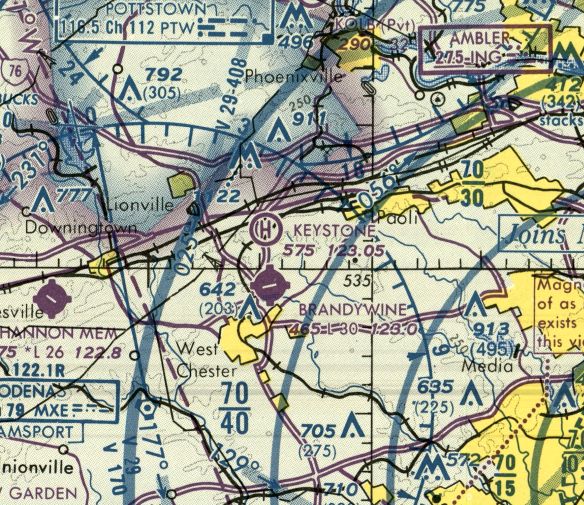
The earliest aeronautical chart depiction which has been located of the Keystone Helicopter West Chester Heliport was on the 1989 Washington Sectional Chart (courtesy of Jonathan Westerling).
It depicted Keystone as a public-use heliport.

An undated aerial view (courtesy of Ken Morrison) looking west at the Keystone Helicopter West Chester Heliport.
Note the 5-bladed Sikorsky S-56 Mojave heavy-lift helicopter parked on the grass at bottom-left,
along with at least 6 smaller helicopters parked on the ramp at bottom-center.

An undated photo (courtesy of Ken Morrison) of a Sikorsky S-58 helicopter at the Keystone Helicopter West Chester Heliport.

An undated photo N16624, a 1956 Sikorsky UH-34D Seahorse, 58-739, at the Keystone Helicopter West Chester Heliport.

An undated photo (courtesy of Ken Morrison) of an MBB/Kawasaki BK 117 helicopters in “Keystone Helicopter Corporation” markings at the Keystone Helicopter West Chester Heliport.

An undated photo (courtesy of Ken Morrison) of 2 Bell 206 Jet Rangers inside the Keystone Helicopter West Chester Heliport hangar.

A 1992 aerial view showed the Keystone Helicopter West Chester Heliport ramp was devoid of any helicopters.

The last aeronautical chart depiction which has been located of the Keystone Helicopter West Chester Heliport was on the August 1998 Philadelphia Terminal Aeronautical Chart (courtesy of John Ferrara).
It depicted Keystone as a public-use heliport.
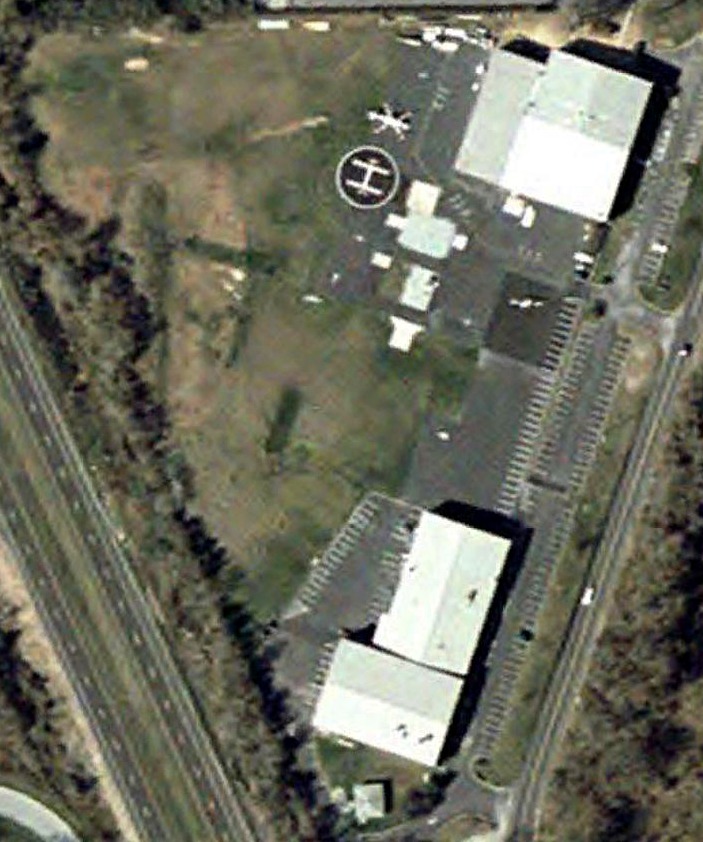
A 2001 aerial view showed a single 4-bladed helicopter on the Keystone Helicopter West Chester Heliport ramp – possibly a Sikorsky S-76?

The last photo which has been located showing an aircraft at the Keystone Helicopter West Chester Heliport was a 2006 photo of “Old Blue”,
a massive Sikorsky S-56 Mojave heavy-lift helicopter being trucked out.
According to Ken Morrison, Keystone Helicopter “stayed at that location until 2006 when they company moved to a facility next to Chester County Airport.”
The Keystone Helicopter West Chester Heliport was no longer depicted on the February 2009 Philadelphia Terminal Aeronautical Chart.
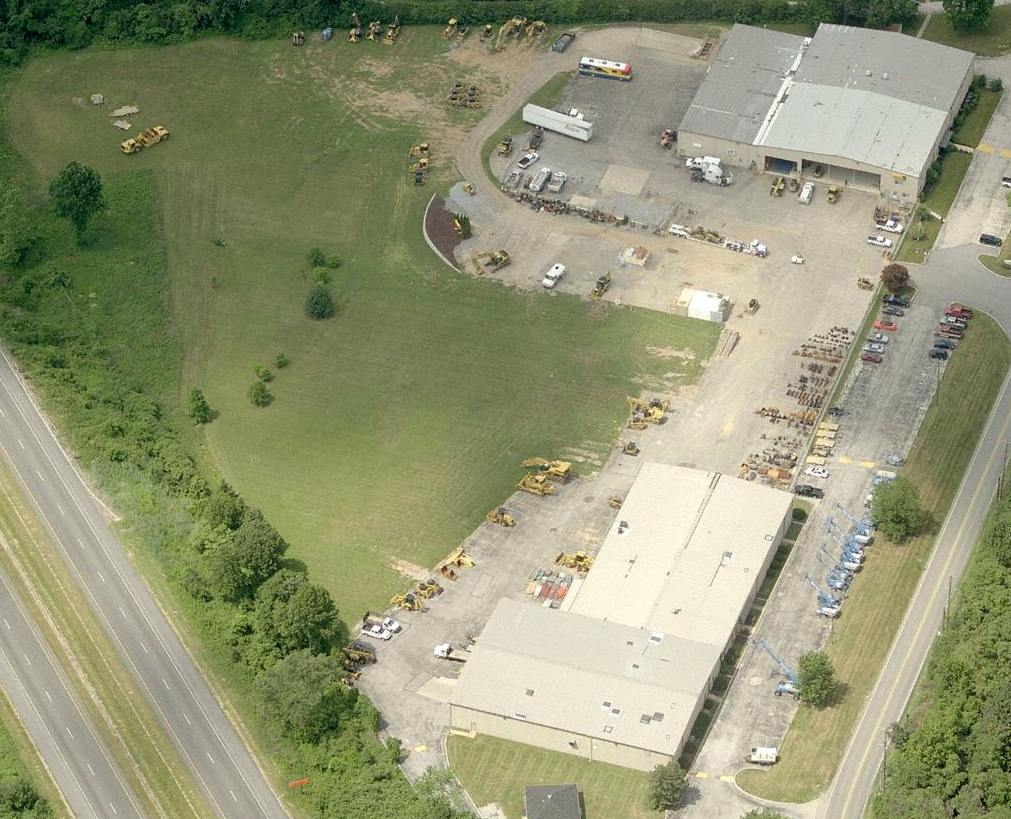
A circa 2010 aerial view looking north showed the Keystone Helicopter West Chester Heliport remained largely intact,
though reused by a construction equipment dealer.

A 2011 aerial view looking north showed the Keystone Helicopter West Chester Heliport remained largely intact.
As of 2015, street maps label the site of the Keystone Helicopter West Chester Heliport as Ransome CAT of West Chester.

A 2022 photo looking northwest at the former Keystone Helicopter West Chester hangar.
The site of the Keystone Helicopter West Chester Heliport is located northwest of the intersection of Phoenixville Pike & King Road.
____________________________________________________
Paoli Airport / Main Line Airport, Paoli, PA
40.06 North / 75.51 West (Northwest of Philadelphia, PA)
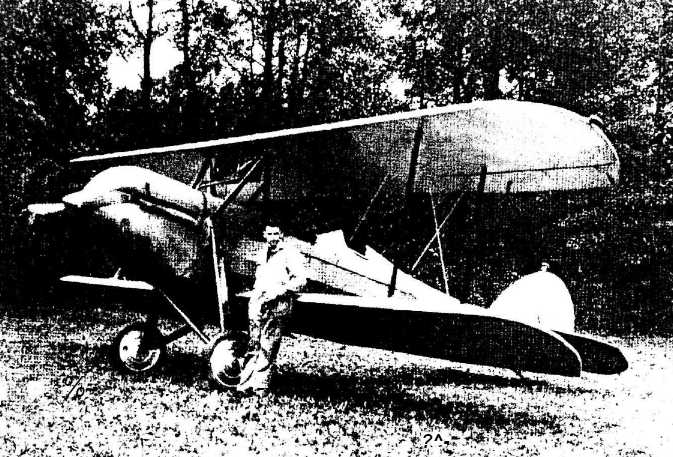
A late 1920s photo of Charlie Devaney in front of his 2-seat Waco biplane.
According to “A History of the Main Line Airport” by Roger Thorne,
Charles Devaney purchased a war surplus Curtiss JN-4 Jenny in the immediate post-WW1 years.
“Charlie's skill as a mechanic enabled the correct assembly of the Jenny,
and an agreement with his father provided the use of one of the farm's pastures for occasional use as an airstrip.
In the period 1920-22, in an era before any government regulation of flight existed,
Charlie taught himself to fly, taking off & landing from the pasture, and becoming the first in Chester County to own & fly a plane.”
Roger continued, “The Devaney pastures would not remain quiet for long.
On 2/27/29, William Devaney, strongly influenced by the health issues that would take his life 2 years later,
sold Twin Brook Farm to the already famous rotating-wing inventor Burke Wilford.
Wilford purchased the Devaney farm for the purpose of designing & flight testing an aircraft variation which he called the 'gyroplane'.
The farm, initially purchased under the Wilford name,
was transferred in May to a newly-created entity of which he was president, the Philadelphia-Main Line Airport, Incorporated.
While initial prototype work on his gyroplane was being completed in New Jersey,
Wilford had the large barn on the new property modified to serve as hangar & workspace.
The word PAOLI was prominently painted on the barn's roof to guide pilots,
who at that time relied exclusively on Visual Flight Rules for their navigation.
In December 1930, the twin-propeller, single-seat, open-cockpit gyroplane,
which Wilford had named 'Configuration #1', was transported to the Philadelphia-Main Line Airport for taxi testing.
After 8 additional months in which the original aircraft was redesigned behind the closed doors of the large barn,
Wilford's team of mechanics & engineers introduced the second configuration called the WRK.
Beginning on August 5, it was this prototype in which Lt. Frank Brown made almost 200 flights over the airport & the Great Valley throughout August 1931.”
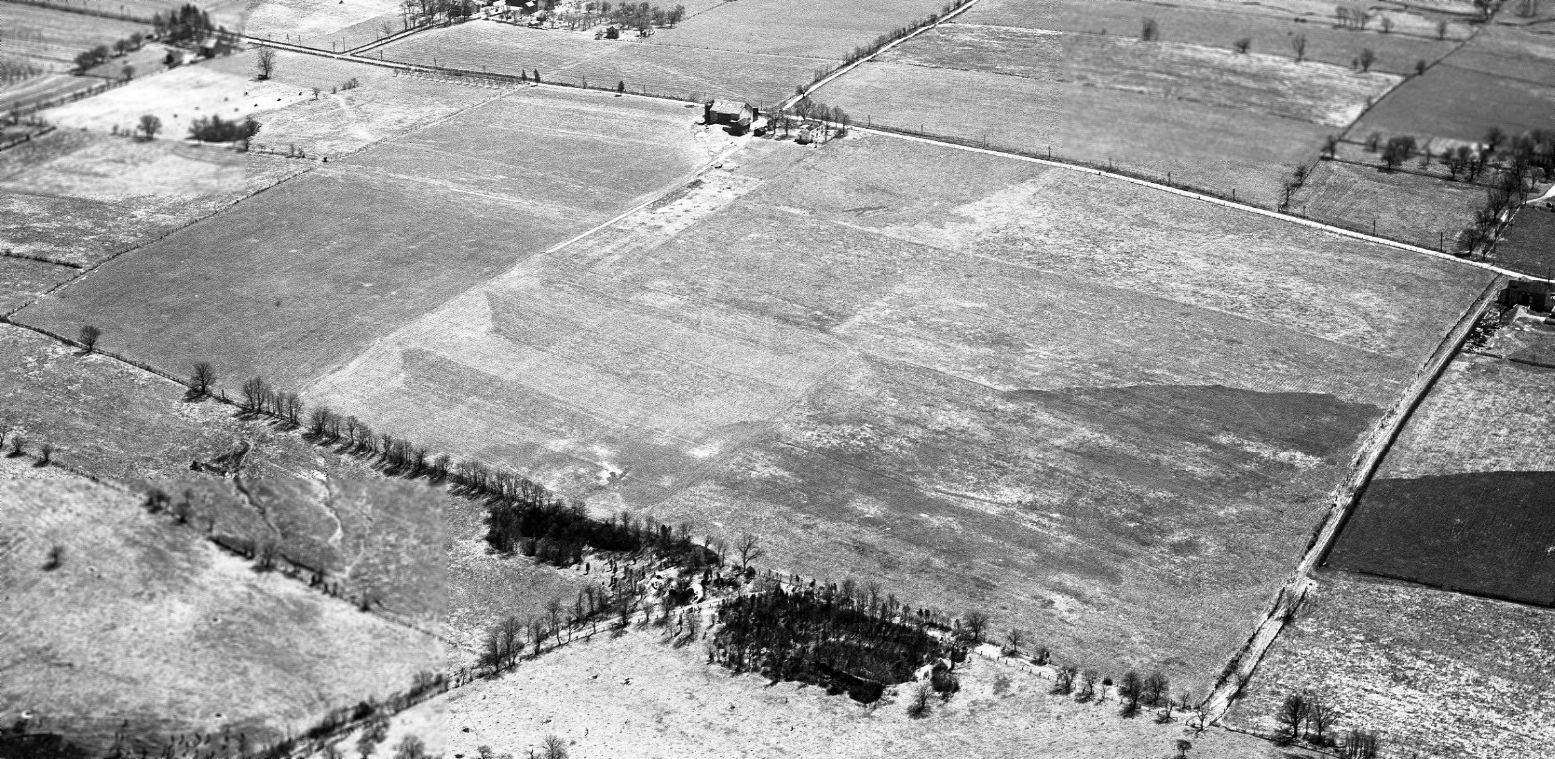
A 4/13/31 aerial view looking south at Paoli Airport (from the Dallin Aerial Survey Collection, courtesy of the Hagley Museum & Library)
depicted the field as consisting of a square grass airfield area with some buildings on the south side.

A Summer 1931 photo of the open-cockpit WRK gyroplane in front of the barn where it was built at Philadelphia-Main Line Airport.
Main Line Airport was not yet depicted on the August 1932 NY Sectional Chart.
According to Roger Thorne, “After using the Airport as his research & development site for almost 2 years,
Wilford decided to permanently move his entire operation from Paoli late in 1932.
He relocated to a much larger former World War I training center & seaplane base located on the Delaware River in Essington.”
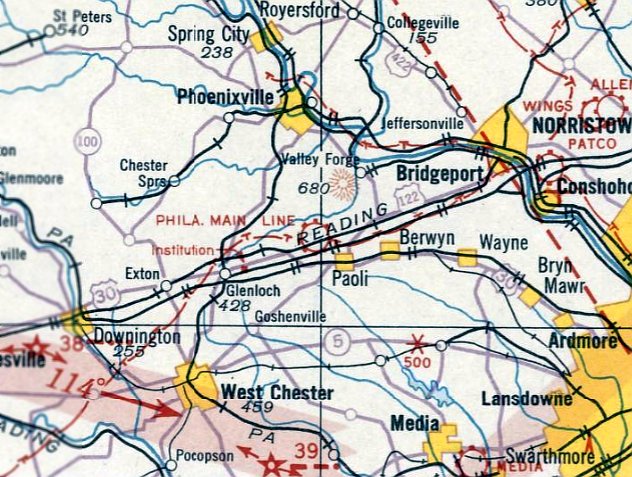
The earliest aeronautical chart depiction which has been located of Main Line Airport was on the April 1933 Washington Sectional Chart,
which depicted Philadelphia Main Line as a commercial/municipal airport.
Roger continued, “On 11/14/36, the substantial influence which Burke Wilford had had upon the Airport for years
officially ended with his sale of the property to the legendary Curtiss-Wright Corporation of New York.
Curtiss-Wright would retain formal ownership for the remainder of the decade,
and Mr. Schachterle continued as Curtiss-Wright's on-site representative for the next 4 years.
The success of Demorr, and the new ownership by Curtiss-Wright, were both catalysts for Airport growth.
There were also 2 additional catalysts.
One was the Main Line Flying School, owned & operated by Paul Gingrich,
whose reputation as an expert flight instructor had allowed him to graduate more student fliers than any other flying school in eastern Pennsylvania.
The second was the Main Line Aircraft School headed by Daniel D'Ambrosio,
who believed that growth in aviation would be limited only by a lack of qualified mechanics to service the emerging technologies,
and who organized a school at the Airport to train airplane & engine mechanics.
All promoted reputation & growth opportunities.”

The earliest photo showing the extent of Main Line Airport
was an undated aerial view looking southwest from The Airport Directory Company's 1937 Airport Directory (courtesy of Bob Rambo),
showing the field to have 3 grass runways, with a barn & several small buildings on the south side.
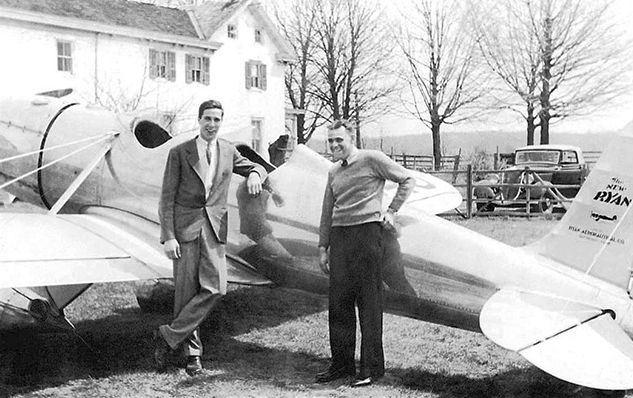
An April 1937 photo (courtesy of Roger Thorne) of Nick Morris & Charlie Devaney proudly stand beside NC17343 at the Main Line Airport, a month after receiving their new Ryan ST-A.
The residence in the background served as the airport's operations center, with Swedes Ford Road running along the treeline.

A 11/4/37 aerial view of Main Line Airport (from Penn Pilot) showed the field to have 3 grass runways, with a barn & several small buildings on the south side.
According to Roger Thorne, “By the late 1930s, war in Europe appeared inevitable.
If America became involved, large numbers of trained pilots would be needed for military service.
One response to that need came as a proclamation by President Roosevelt in December 1938, announcing the creation of the Civilian Pilot Training Program.
For the Main Line Airport, the Civilian Pilot Training Program was a godsend.
Their CPTP program began in 1939 & was primarily directed to providing flight training & certification to young men
from Villanova University & West Chester State Teachers College.
The U.S. Government paid virtually all the fees for a student's flight training,
creating an unaccustomed cash flow to the instructors & the Airport
that, until then, had been making due by serving a relatively few wealthy patrons less affected by Depression austerity.
Nick Morris & Paul Gingrich, who were normally the 2 full-time flight instructors at the Airport,
were now able to hire several additional instructors to fulfill the increased mission.
During all the hundreds of training flights flown in & out of the Main Line Airport during the CPTP period, there was only one recorded accident.”

An undated photo of a Ryan ST-A overflying a rare & unusual Stearman-Hammond Y-1S at Main Line Airport (courtesy of Roger Thorne).
The photo appeared in the summer 1938 Daily Local News with the caption, “Polishing up on his pylon turns at Paoli Airport,
Nicholas Morris is caught in his Ryan low-wing plane as Dick Bircher, director of the Philadelphia Air Races next Saturday, watches him.”

A late 1930s photo of pioneering female pilot Joan King, seen refueling a Taylor E-2 Cub at Main Line Airport (courtesy of Orville Jenkins, via Ed Hatton).

A 1939 aerial view Thomas Skilton looking north at Main Line Airport (courtesy of Roger Thorne) with Swedesford Road in the foreground.

A summer 1940 photo looking southwest at Main Line Airport's new hangar under construction (courtesy of Robert Devaney, via Ed Hatton).

A 1940 photo by Orville Jenkins of James “Buck” & his Taylorcraft at the Main Line Airport (courtesy of Roger Thorne).
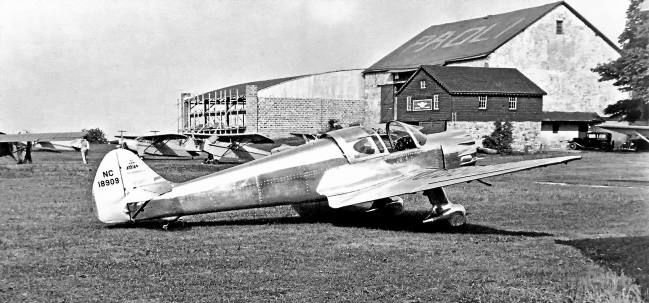
An August 1940 photo of Demoor Aeronautical's Ryan SC-W at Main Line Airport (courtesy of Robert Devaney, via Ed Hatton).
According to Roger Thorne, “The inflow of cash enabled Demorr to purchase several Piper J-3s as flight trainers;
a 1936 four-door Ford sedan to transport student pilots back & forth from the Paoli train station & West Chester;
and, in 1940, enabled the construction of a large aircraft hangar with dimensions of 100' x 60'.
With an operating height of 14', it was designed to accommodate the DC-3, the largest airplane of its time.
An interesting note concerning this hangar was that, to reduce construction costs,
Demorr acquired the large overhead trusses, required to eliminate vertical support beams,
in 'used' condition from an airport in South Carolina, and had them shipped to Paoli by rail.
With the completion of the new hangar, the temporary sheet metal hangar was demolished.”
Roger continued, “By 1940, the War Department was accelerating its war preparations,
and Curtiss-Wright, the owner of the Airport since 1936,
would clearly be playing a major role in armaments production.
The company that was to manufacture the P-40 Warhawk fighter, the C-46 Commando transport, and the Navy SB2C Helldiver dive bomber
now desired to divest itself of non-essential assets.
Demorr Aeronautical was at the right place at the right time.
On 4/4/40 Demorr purchased the Airport from Curtiss-Wright Corporation for $42,000 & assumed full management of the site.
Charles Devaney remained president, Nick Morris, secretary & treasurer, and Morton Caldwell became vice president.
By the end of 1940 the airport was considered one of the busiest & best equipped airfields of its size in the entire Commonwealth of Pennsylvania.”

A 1941-42 photo of a North American T-6 trainer at the Main Line Airport.
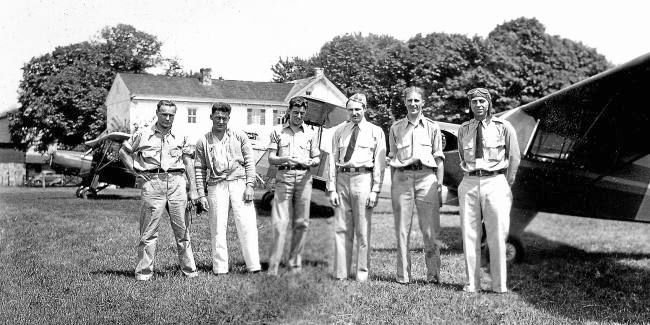
A summer 1942 photo of 6 volunteer pilots & mechanics of the Civil Air Patrol at Main Line Airport (courtesy of Joe Berry, via Ed Hatton),
with the CAP's Flight Operations Center in the background.
According to Roger Thorne, “America's entry into World War II brought drastic changes to civilian flying.
During the war the Main Line Airport was, by necessity, in a state of semihibernation as severe rationing of aviation gas made it very difficult to fly for pleasure.
The Airport's use as a training ground for the CPTP continued until early 1943 when the government decided that it now had a pilot glut.
For the Airport, it was good while it lasted.
Fortunately, in 1942, Demorr Aeronautical had been able to apply its machining equipment & experience
to secure a subcontracting agreement with Naval Aircraft Factory in Philadelphia to manufacture ailerons for a large flying boat known as the PBN Catalina.
Demorr built component parts for 156 aircraft during the period 1942-45.”
Milt Aitken reported, “Main Line Airport... an occupant was Norman Greene who owned a Stinson 10 A ('105').
He designed & tested a light aircraft bombsight for Civil Air Patrol planes to use to drop smoke bombs on U-boats offshore.
The operators at Main Line (Nick & Tony) were a Ryan distributor & had the first Ryan SC on the East Coast.”
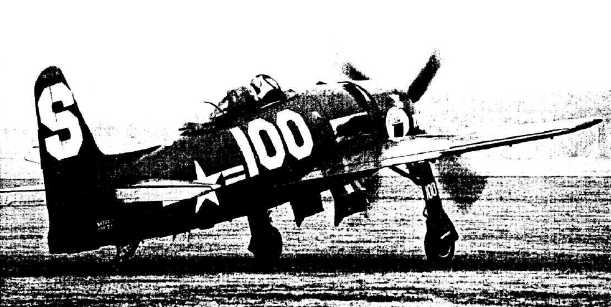
A 1944-45 photo of a Grumman F8F Bearcat fighter which often visited the Main Line Airport from the Philly Navy Yard's Mustin Field.
According to Roger Thorne, “The Airport never completely closed to aviation during the war.
Charles Devaney's son Bob tells of a friendly relationship established between the Airport
and a Naval aviator stationed at the Philadelphia Navy Yard late in 1944 & into 1945.
This aviator apparently had substantial autonomy in accruing flight hours with the Navy's newest & fastest fighter, the Grumman F8F Bearcat.
The F8F was produced too near the end of hostilities to see much combat,
but was the fastest propeller-driven aircraft produced during World War II.
Bob tells of several occasions when this pilot would roar down the Great Valley
and over the airport with his 18-cylinder Pratt & Whitney R2800 radial engine screaming, scaring livestock & agitating neighbors.
Then, the F8F would touch down on the airstrip, the aviator would spend a few moments on the ground talking to one & all,
and, on at least one occasion, with the whine of a police siren in the background, take off again with a roar.
With the F8F's capacity to fly almost vertical from takeoff to 10,000', the sight & sound must have been unforgettable.”
Roger continued, “In one memorable incident, the aviator landed his Bearcat & taxied over the grass strip to the farmhouse
where, leaving the engine idling, he climbed down & went inside the flight office
(built in the rear of the farmhouse & facing out onto the field) to get a cup of coffee.
The ground was spongy from days of rain.
The heavy fighter, equipped with narrow tires ideally suited for a carrier flight deck but not a sodden former pasture,
and vibrating heavily in its normal idle mode, began to sink into the mud until the giant propeller was almost spinning into the ground.
Fortunately, through the efforts of several brave volunteers with shovels & the use of the airport tractor,
the F8F was somehow extricated from its muddy grip, and our aviator was able to take off
with perhaps some explaining to do back at the Navy Yard about how his undercarriage got so muddy.”

The May 1944 Washington Sectional Chart depicted Philadelphia Main Line as an auxiliary airfield.
The 1947 NY Sectional Chart depicted Philadelphia Main Line as a commercial/municipal airport.
A 1951 aerial photo showed a single light aircraft next to the hangar at Main Line Airport.

The last aeronautical chart depiction which has been located of Main Line Airport was on the January 1952 NY Sectional Chart.
Main Line Airport was no longer depicted on the July 1952 NY Sectional Chart (or subsequent aeronautical charts).
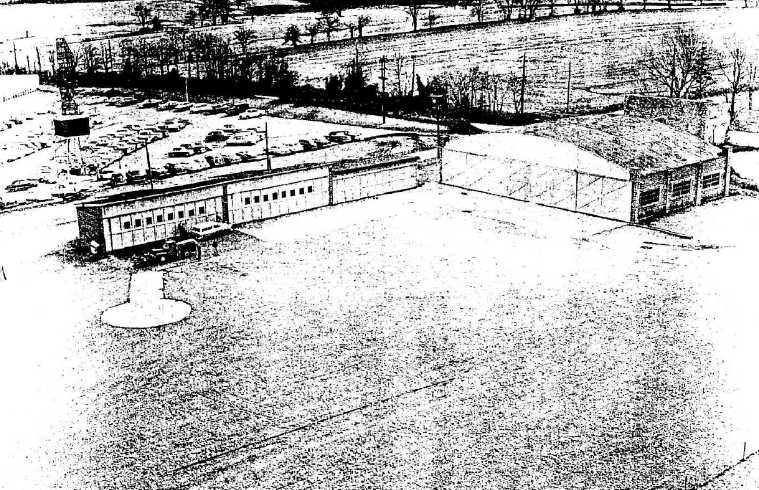
A 1956 aerial view looking southwest at the large hangar & T-hangars which served the Haig-K Aircraft Corporation at Main Line Airport.
The remains of the old barn rise behind the large hangar. The Burroughs parking lot was visible across Swedesford Road.
According to Roger Thorne, “With the sale to the Monroe Coal Mining Company (Bethlehem Steel), a new future lay before the Main Line Airport.
Fixed-wing aviation had dominated the airport during the 2 decades since Burke Wilford last flew his autogiro over the Great Valley.
However, all that changed with new land-use regulations created by the new owners of the land.
With the departure of Demorr Aeronautical from the airport, Bethlehem placed a prohibition on fixed-wing takeoffs & landings.
That prohibition was reinforced by the placement of barbed wire fencing
to subdivide the original runways for the temporary use as cattle grazing pastures.”
Roger continued, “A flight test engineer named Haig Kurkjian...
had started work for Kellett Aircraft Company on their XR-8 helicopter project.
Departing Kellett in 1945, he worked for Piasecki Helicopters (known today as Boeing Helicopters) for almost 2 years,
and then, in the spring of 1947, began teaching at the Quaker City School of Aeronautics in Philadelphia.
It was there, with space provided by the school, that he began designing a helicopter of his own design that he would name the HK-1.
Haig was one of a group of aviation visionaries who saw aircraft as a natural extension of the automobile.
Haig became aware, in early 1952, that the old Main Line Airport would soon become vacant.
He successfully negotiated a year-by-year lease with Bethlehem Steel, enabling Haig-K Aircraft to use all existing Airport buildings,
and sufficient portions of the property, for use in rotary-wing development.
Bethlehem Steel made it clear that they had purchased the Airport for their long-term future needs
and did not intend to begin quarrying for at least 30 years.”
Roger continued, “The officers of the Haig-K Aircraft Corporation considered the facilities, terms, and future all favorable for Haig-K.
In the winter of 1952, the firm moved its machining equipment, and the HK-1, to the Airport.
The 6,000-square-feet main hangar would be used for repairs & maintenance, with a portion adapted as a wind tunnel.
The 5 adjacent T-hangars, totaling almost 6,000 additional square feet, were adapted as machine shops.
Haig's son Dan Kurkjian recalls that the downstairs of the old farmhouse was used for engineering offices,
while the upstairs served, in the early years, as living accommodations.
During the early 1950's George Hall, the firm's secretary & one of its engineers, lived upstairs with his family.
In 1960, when the Halls moved into a house in Malvern, the Kurkjian family actually lived upstairs for a period.”
Roger continued, “When Haig-K moved to the Airport, the old barn, with the word PAOLI still visible on the roof,
continued to be useful for equipment storage.
All that changed on 10/15/54 as Hurricane Hazel, one of the most destructive hurricanes ever to hit North America,
blew ashore near the border between North & South Carolina.
So fast was its movement inland that it reached Pennsylvania by that evening.
Hazel's intensity & speed combined to produce the highest sustained wind gusts ever officially recorded in the Delaware Valley.
Among the casualties of the storm was the barn, so badly damaged by the winds that Bethlehem Steel,
concerned that the structure might collapse & kill someone, ordered its superstructure razed.
The litter of beams & roof were removed, leaving only the heavy stone walls remaining.
The adjacent carriage barn, where Wilford had kept his autogiro,
fared better from the storm & remained useful as a garage for years to come.”
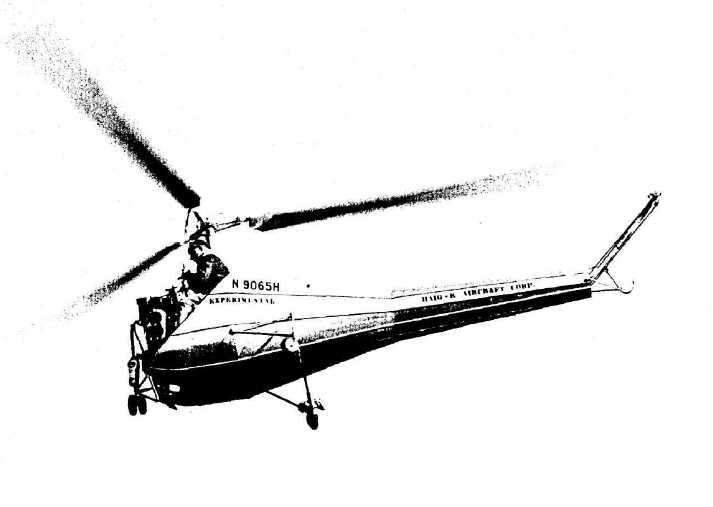
A 1957 photo of Haig Kurkjian flying N9065H over Main Line Airport.
This was the sole prototype of the HK-1, the world's first helicopter to fly utilizing a multi-V belt drive for both the main & tail rotors.
Note the Continental motor practically in the pilot's lap.
Roger continued, “And what about the HK-1?
Kurkjian had developed a completely new rotor system that successfully eliminated the vibration problems evident in the earlier test flight.
By 1957, after 9 years of research & testing, the HK-1 became the world's first helicopter
to successfully fly utilizing a multi-V belt drive for both main & tail rotors.
The HK-1 was able to hover for extended periods, and flew successfully on many occasions at the Airport & through the Great Valley.
Regrettably, the HK-1 proved to be a technical rather than a financial success.
Haig-K Aircraft could not acquire the millions of dollars of venture capital required to obtain flight certification
for their revolutionary new helicopter from the newly founded Federal Aviation Agency.
This was a crushing realization.”
Roger continued, “By 1959, Kurkjian decided that the only pragmatic course for Haig-K Aeronautics
was to use their machine shops & their team of skilled draftsmen, engineers,
machinists, and mechanics to create an engineering & research & development consulting business
for use by other aviation companies & individuals.
The largest of these customers would be Bell Helicopters.
Arthur Young, the brilliant rotary-wing inventor who founded Bell Helicopters in the early 1940s,
continued to own a farm directly across Swedesford Road from the Main Line Airport.
Arthur maintained a very warm personal relationship with Haig Kurkjian.
This personal trust, and the professional respect generated by Haig-K's development of an innovative variable diameter rotor used by Bell,
resulted in Haig-K being granted status as an FAA-approved repair station for the Bell Model 47 helicopter during the period 1963-73.
Haig-K was authorized to complete any & all airframe & engine repairs at their Main Line Airport facilities.
They, in fact, built at least a half dozen Bell 47s 'from scratch' at the Airport.
On several occasions, Haig-K 'scratch built' from the frame up, a brand new helicopter whose official paper trail would show it to be a used aircraft.
Under this perfectly legitimate method, Haig-K was able to sell 'new-used' helicopters to buyers
at a price significantly lower than buying that same aircraft from the Bell factory.”

A 6/7/58 aerial view of Main Line Airport (from Penn Pilot) showed the hangars at the southeast corner, and the airfield area remained clear,
but there were no more distinct runways.
According to Roger Thorne, “In June 1964, Bethlehem Steel Company sold its properties in the Chester Valley, including the old Main Line Airport,
to Atlas Chemical Industries, Inc. of Wilmington, Delaware.
However, Atlas continued a passive ownership of the land, and Haig-K continued with 'business as usual'.”

The last depiction of Main Line Airport which has been located was a 7/5/71 aerial view (from Penn Pilot).
It showed the airfield & hangars to remain intact, but there was no indication of any recent aviation usage.
According to Roger Thorne, “In 1972, the British company Imperial Chemical Industries Ltd. acquired Atlas & once again land title passed.
It was under ICI, however, that a strategy began to emerge for subdividing its Great Valley land holdings for commercial development rather than for quarrying.
In 1974, Rouse & Associates, later known as Liberty Property Trust,
purchased the first 650 acres of what would become the Great Valley Corporate Center.”
Ken Morrison recalled, “In 1974 I was flying for Keystone Helicopter Corporation & owned a J-3 Cub.
Two of the mechanics I worked with at Keystone had a hangar at Paoli Heliport [Main Line Airport] & were rebuilding a Cessna 140.
There was a small section of runway remaining. The mechanics offered to do the Annual on my Cub
and got permission from Haig-K for me to land my Cub on the 500' runway.
The guys were really amazed how well the Cub got into & out of the short runway.
At the time Haig-K was restoring a Kellet autogiro.
It was amazing to see how the Kellet was made; my maternal grandfather worked for Kellet in the 1930s.
I did not realize at the time what a history Paoli Airport had.”

The last depiction of Main Line Airport which has been located was a pair of circa 1975 photos by Ken Morrison of an Air & Space 18A autogyro.
Ken Morrison recalled, “A year or so after the Annual inspection for my Cub a Keystone pilot, John Roatch, rented an Air & Space 18A autogiro for several months.
He based it at Main Line, he knew Haig-K since the 1950s.
In the background you can see the telephone wires along Swedsford Road & part of the Bouroghs factory. The circle had the heliport H in the center.”
According to Roger Thorne, “In 1976, Haig's son Dan Kurkjian, an experienced pilot & flight instructor,
became the last person to fly an aircraft at the Main Line Airport.
As part of a Bicentennial celebration at the Willow Grove Naval Air Station, former site of Harold Pitcairn's helicopter plant,
Dan flew an Air & Space Model 18A autogiro over Willow Grove Naval Air Station & then flew it back to the Airport in Paoli.”
Roger continued, “During its 25 years of occupancy at the Main Line Airport,
Haig-K had subleased portions of the 12,000-square-feet of building space to generate additional cash flow for the business.
A portion of the main hangar had been sublet to a small auto body shop.
In 1977, sparks from an acetylene torch ignited what became a conflagration that totally destroyed the hangar.
The trauma to Haig-K was devastating, as all the equipment & assets within, even the original HK-1, were irretrievably lost.
This tragic incident, coupled with the loss by fire 3 years before of 3 of the T-hangars, brought an end to Haig-K's use of the old Airport.
The company abandoned the land completely the following year.”
Roger continued, “In 1978, the same year that Haig-K Aircraft finally departed the Great Valley,
a company called Shared Medical Systems broke ground for a large data center, with a corporate headquarters to follow 2 years later.
SMS was one of the first occupants of the many to follow in the Great Valley Corporate Center.
It is ironic that those SMS (now Siemens) buildings today sit almost precisely at the juncture where the fixed-wing runways of the old Main Line Airport intersected.”
A 1992 USGS aerial photo showed that the Main Line Airport hangars had been removed, but the airfield area remained largely clear.
A 1999 USGS aerial view showed that office buildings had been constructed over the site of Main Line Airport.

A 10/8/11 aerial photo showed office buildings occupying the southwest portion of the Main Line Airport site,
with no trace remaining of the historic airport.
The site of Main Line Airport is located northwest of the intersection of Sweedesford Road & Church Road.
____________________________________________________
40.1, -75.31 (Northwest of Philadelphia, PA)

A 9/28/30 aerial view looking southeast at Patco Field during the Pennsylvania Aero Club Sportsmen Pilots Race.
According to Ed Stewart, “Aero Service Corporation [was] established by John Howard, Forrester Scott and John Wesley Smith with funding from Mary Gibson.
About 1926 Smith convinced Gibson to to purchase property further out [from their earlier airfield in Philadelphia]
and Patco field was established around 1927 with Smith acting as manager.
Almost simultaneously with the move to Patco, Aero Service Corp was sold to employee Virgil Kauffman.”
The earliest depiction of Patco Field which has been located
was a 9/28/30 aerial view looking southeast at the field during the Pennsylvania Aero Club Sportsmen Pilots Race.
It depicted Patco Field as having a hangar & several other buildings along the northeast side of a grass field,
on which were a dozen aircraft, including one which had just taken off.
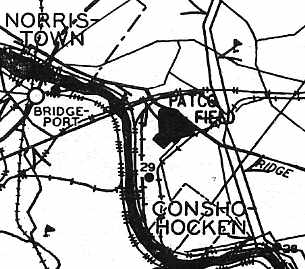
Patco Field, as depicted on the Philly Chamber of Commerce's 1930 "Aviation Map of the Philadelphia Metro District" (courtesy of Tom Beamer).
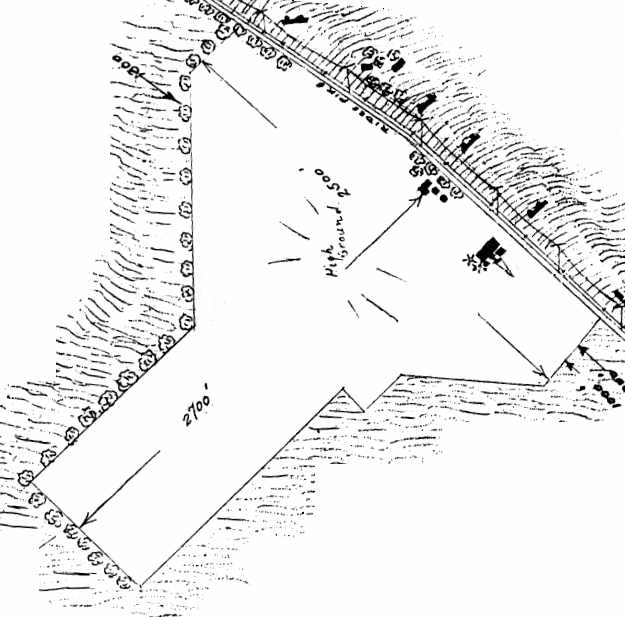
The airfield layout of Patco Field as depicted in the 1930 book "Philadelphia Aeronautical Center of the East"
(courtesy of the George H. Stuebing Collection of the Delaware Valley Historical Aircraft Association).
It described Patco Field as a commercial airport, owned by M.K. Gibson & operated by the Philadelphia Air Transport Company.
The field was said to consist of an irregularly-shaped 76 acre sod field, measuring 2,700' northeast/southwest by 2,500' northwest/southeast.
A single wooden & steel 96' x 72' hangar was depicted on the northeast side of the field,
which was said to offer sales & service of Bellanca & Mono Aircraft Company planes.
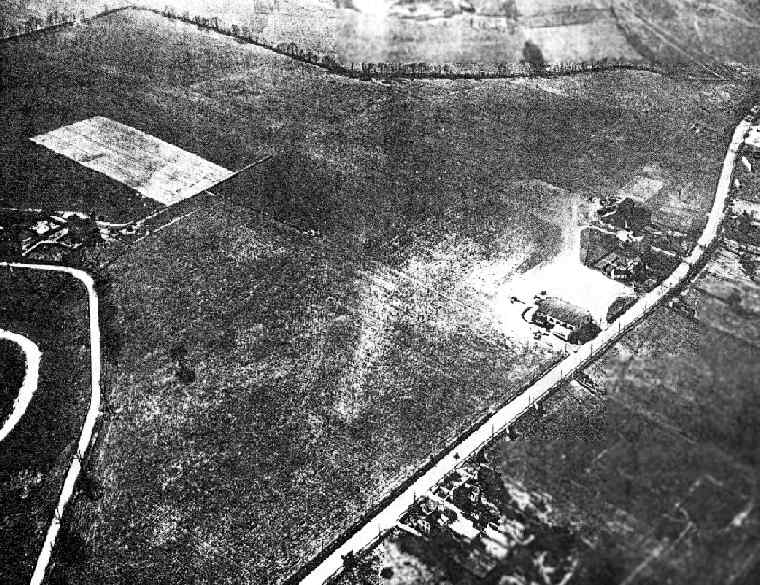
An aerial view looking soutwest at Patco Field from the 1930 book "Philadelphia Aeronautical Center of the East"
(courtesy of the George H. Stuebing Collection of the Delaware Valley Historical Aircraft Association).
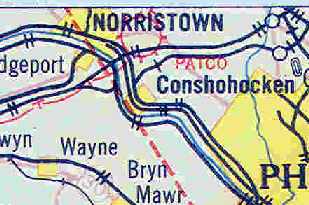
Patco Field was depicted as a commercial airport on the May 1932 J-18 Washington D. C. Airway Map (courtesy of Chris Kennedy).

The August 1932 NY Sectional Chart depicted Patco Field as a commercial/municipal airport.

A 1934 photo of a dozen Monocoupes lined up for a race in front of 2 hangars at Patco Field.
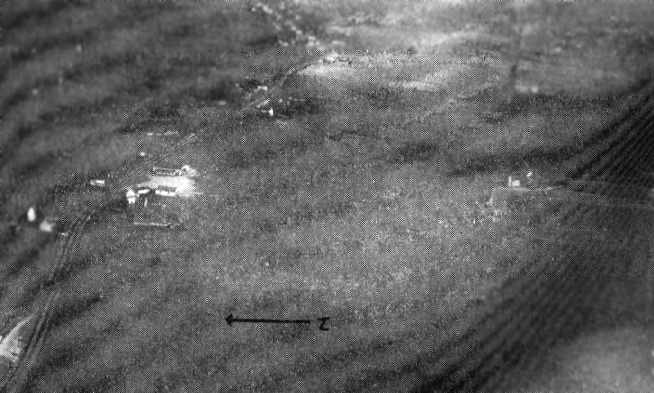
An aerial view looking east at Patco Field from The Airport Directory Company's 1937 Airport Directory (courtesy of Bob Rambo).
The directory described Patco as a sod field measuring 2,700' northeast/southwest by 2,500' northwest/southeast.
A few small hangars were depicted along the northeast side of the field.
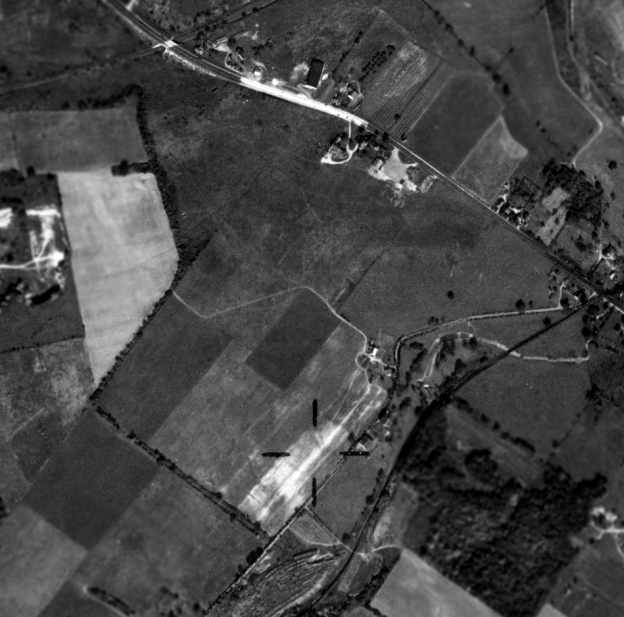
A 10/8/42 aerial view of Patco Field did not show any evident signs of use.

The May 1944 Washington Sectional Chart depicted Patco Field as an auxiliary airfield.
Patco Field was not listed among active airfields in the 1945 AAF Airfield Directory (courtesy of Scott Murdock).
It may have been temporarily closed during WW2 (like many other small general aviation airports along the coasts),
or it may simply have been overlooked as a relatively minor airfield.
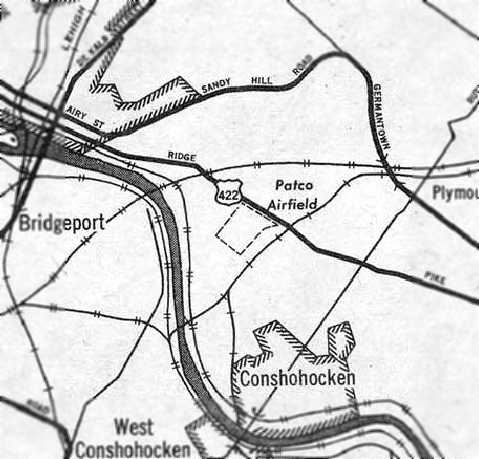
A 1946 USGS map depicted the outline of Patco Airfield.
A 1948 aerial view depicted a healthy little general aviation airport,
with 9 light aircraft parked around the buildings on the northeast side,
and an airport circular marker in the center of the field.
Walt Stepek recalled, “My first exposure to airplanes was as a little boy,
when my Dad had a friend with a Piper Cub based at Patco Field.”
The 1949 Washington Sectional Chart (courtesy of Mike Keefe) depicted Patco Field as having a 2,000' unpaved runway.
The last photo which has been located of Patco Field was a 1950 aerial view.
It showed Patco Field to be very similar as depicted in the 1948 aerial view,
with 9 light aircraft parked around the buildings on the northeast side
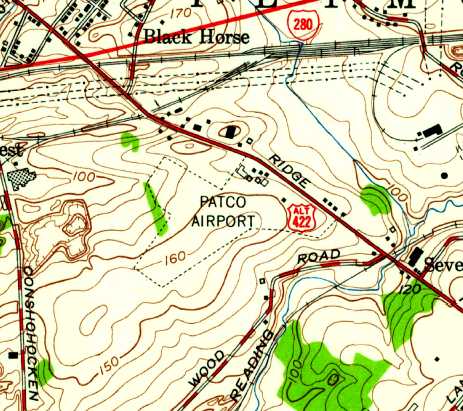
The last topo map depiction which has been located of Patco Field was on the 1952 USGS topo map.
It depicted “Patco Airport” as an irregularly-shaped outline with a group of small buildings along the road on the notheast side.

The last aeronautical chart depiction which has been located of Patco Field was on the July 1952 NY Sectional Chart,
which depicted Patco as having a 2,200' unpaved runway.
Patco Field was evidently closed (for reasons unknown) at some point between 1952-53,
as it was no longer depicted at all on the January 1953 Washington Sectional Chart.
A 1958 aerial photo showed that a building had been constructed over the northeast part of the property,
but the southwest half remained clear.
An 8/6/71 aerial view no longer showed any trace of Patco Field.

A 2016 aerial photo showed the site of Patco Field has been covered by numerous large buildings, and not a trace appears to remain of the former airport.
The site of Patco Field is located southwest of the intersection of West Ridge Pike & Industrial Way.
____________________________________________________
Pitcairn Field (1st location), Bryn Athyn, PA
40.14, -75.06 (North of Philadelphia, PA)

A ticket from the 11/2/24 Formal Opening of Pitcairn Flying Field, Bryn Athyn (courtesy of Tom Heitzman).
Aviation pioneer Harold F. Pitcairn conducted pioneering development of rotary-wing aircraft.
His first airfield was in Bryn Athyn, on the Pitcairn family estate,
about a 15 minute walk from Harold Pitcairn's home.
According to Steven Lindrooth (using information from Frank Smith's book “Legacy of Wings”),
the first airplane landing on the site of the Bryn Athyn field took place in 1916.
In early 1924, construction began on the hangar / factory building,
and a clubhouse building for the Aero Club of Pennsylvania.
According to Steven Lindrooth, “The hangar & the clubhouse were both completed
before the official opening of the Bryn Athyn field in 1924.
The Kingston Smith book has a photo that clearly shows both buildings at dedication.”
The Formal Opening of Pitcairn Flying Field, Bryn Athyn, was held on 11/2/24, according to a ticket from the event (courtesy of Tom Heitzman).
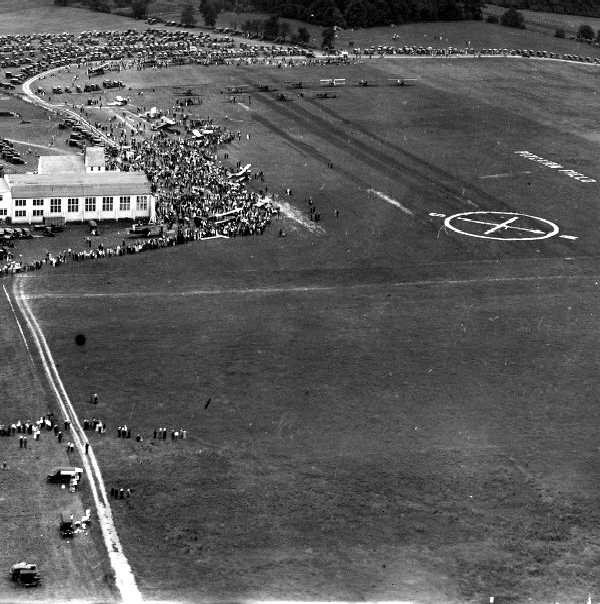
The earliest photo which has been located of Pitairn Field was a 1925 aerial view looking southwest during an Air Meet.
The photo depicted the wooden hangar on the east side of the grass runway, which was marked with “Pitcairn Field” in large letters.
Over a dozen biplanes were visible on the field.
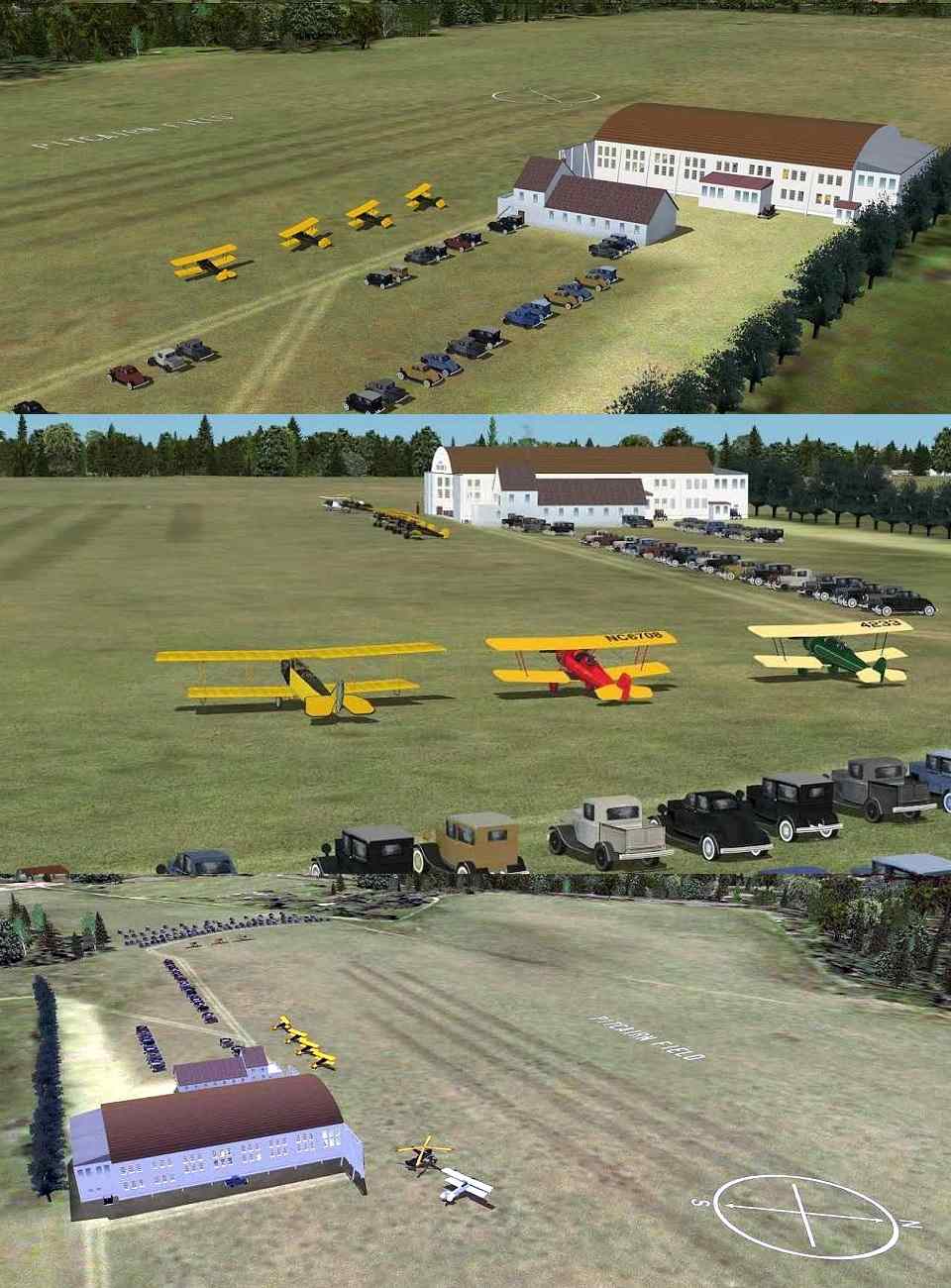
A series of 3 flight simulation scenery depictions of 1920s Pitairn Field by Golden Age Simulations.

An undated photo of Harold Pitcairn flying a Cierva C8W autogiro above the Bryn Athyn Cathedral (just to the southwest of the original Pitcairn Field).

An undated photo of the “Pitcairn Aviation Factory at Brytn Athyn” from the 1926 brochure “The Airplane Pilot” published by Pitcairn Aviation Inc. (courtesy of Tom Heitzman).
The brochure said, “The Pitcairn Aviation Factory is located at Bryn Athyn, and includes a large assembly plant, with designing & drafting offices, woodworking shop, metal shop, etc.
There is a building devoted to engine design & experiment, and a laboratory for aeronautical research.”
By 1926, Pitcairn's flight instruction, sightseeing, and airmail business had outgrown the limited Bryn Athyn facility fairly quickly,
and he purchased a large farmland tract in Willow Grove to which he relocated his commercial operations.
Some manufacturing operations remained in Bryn Athyn for a while, as will as some research & development operations.
Pitcairn had previously experimented with rotary-wing aircraft designs, and now began to focus his attention on rotary-wing development.
Several years earlier, Spanish aristocrat and inventor Juan de la Cierva
had solved the aerodynamic problems which had doomed previous rotary-wing designs.
Cierva called his invention the "Autogiro" (an aircraft distinguished by a free-wheeling main rotor).
In the Fall of 1928, Pitcairn Aviation acquired the rights to manufacture autogirosin the United States.
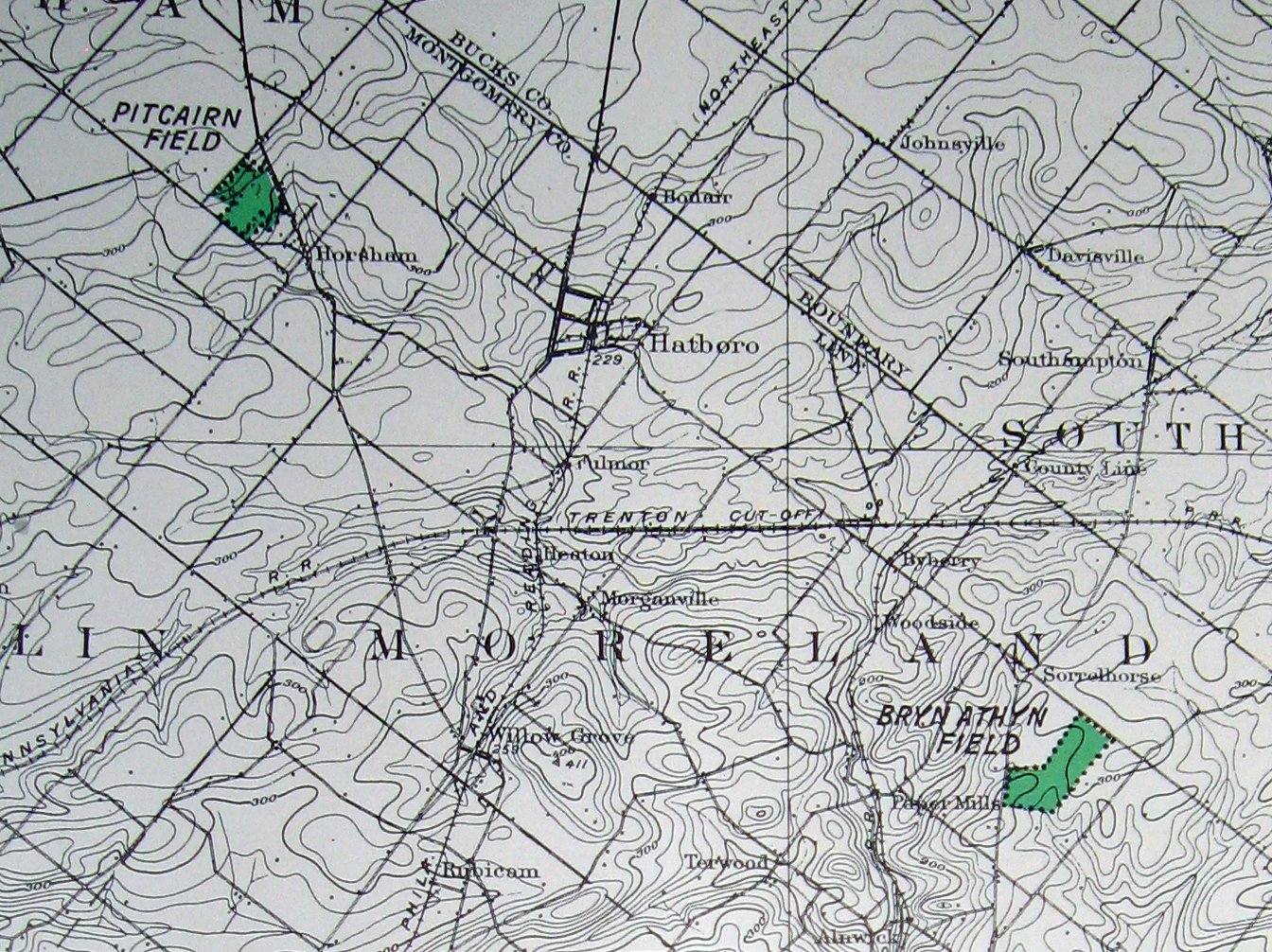
“Bryn Athyn Field”, as depicted in a 1928 report “Location of Airport, Philadelphia” (courtesy of Fred Kelso).
On 12/18/1928, a Cierva Autogiro acquired by Harold Pitcairn was assembled & flown from Pitcairn Field in Bryn Athyn.
This was the first flight of an autogiro in the United States.
Redesign & manufacturing of autogiros was immediately begun by Pitcairn,
with Pitcairn having formed a business partnership with Cierva to develop Autogiro technology in the United States.
Pitcairn's airmail operation (Pitcairn Aviation, Inc.) was sold in the Summer of 1929.
This company would eventually become Eastern Airlines.
The sale of the airmail operation freed Pitcairn to concentrate on production of the Pitcairn Mailwing biplane & to look forward to rotary-wing aircraft production.
According to Steven Lindrooth, “At the time of the sale, it was decided that all operations including the rotary-wing operations were to be moved Willow Grove.
This move was in process at the time the Bryn Athyn factory building (hangar) burned, in middle October, 1929.
Much tooling & several uncompleted airframes were destroyed, but the drawings & engineering data were at Willow Grove by that time.”
No further research &/or manufacturing operations were conducted from that point onward at Bryn Athyn.
According to Steven Lindrooth, “I believe that the Bryn Athyn field remained as an airport for some time after the fire.”

A remarkable 1931 photo of Juan de la Cierva (inventor of the Autogiro) making a very tail-low landing of G-AAKY at Pitcairn Field, Bryn Athyn.
The Pitcairn Flying Field in Bryn Athyn was not depicted on the August 1932 NY Sectional Chart (or subsequent aeronautical charts).

An 8/8/42 aerial photo of the original Pitcairn Field, showing a single northeast/southwest grass runway, with the hangar & clubhouse ruins to the east.
No aircraft were visible on the field.
According to Steven Lindrooth, “Anecdotally, it seems that it was used, at least occasionally, until the beginning of the Second World War.”
Pitcairn Field was not listed among active airfields in the 1945 AAF Airfield Directory (courtesy of Scott Murdock).
According to Steven Lindrooth, “I do not believe that it was used after the war.”
A 1958 aerial photo of the original Pitcairn Field showed that the open grass airfield area remained remained clear,
but the hangar & clubhouse were gone, with trees having grown up in their place.
An 8/7/71 aerial photo depicted the site in the same condition.

As seen in a 2005 USGS aerial photo, the open grass expanse of the original Pitcairn Field still remains clear.
The square of woods protruding into the field just east of the center of the photo is the location of the hangar & clubhouse ruins.
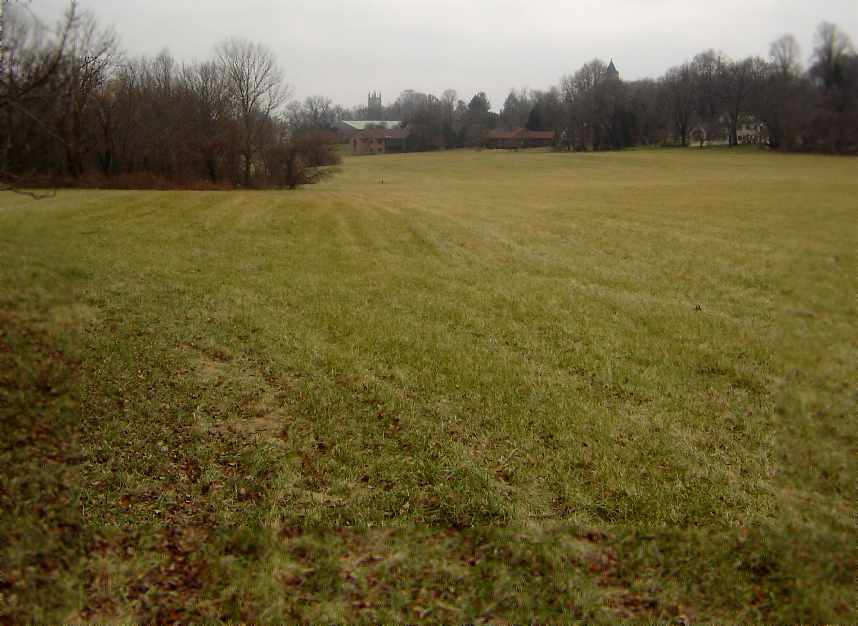
A December 2005 photo by Steven Lindrooth, looking southwest along the original Pitcairn Field, with the Bryn Athyn Cathedral visible in the background.
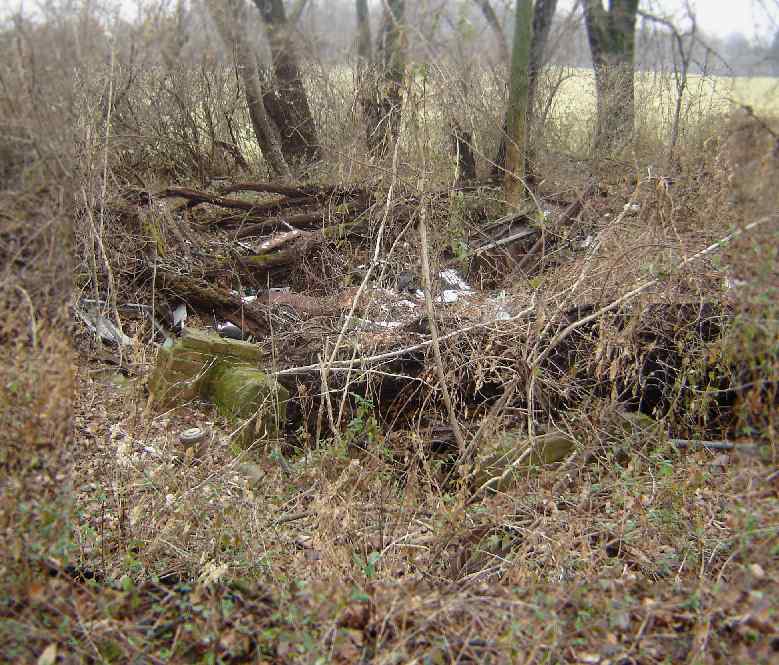
A December 2005 photo by Steven Lindrooth of the remains of the Clubhouse of the Aero Club of Pennsylvania.
Stephen reported, “The building simply collapsed on itself & over the years has settled into its own basement.
It is kind of sad & kind of amazing to walk into a grove of trees & see this bit of aviation history under the leaves & brush.”
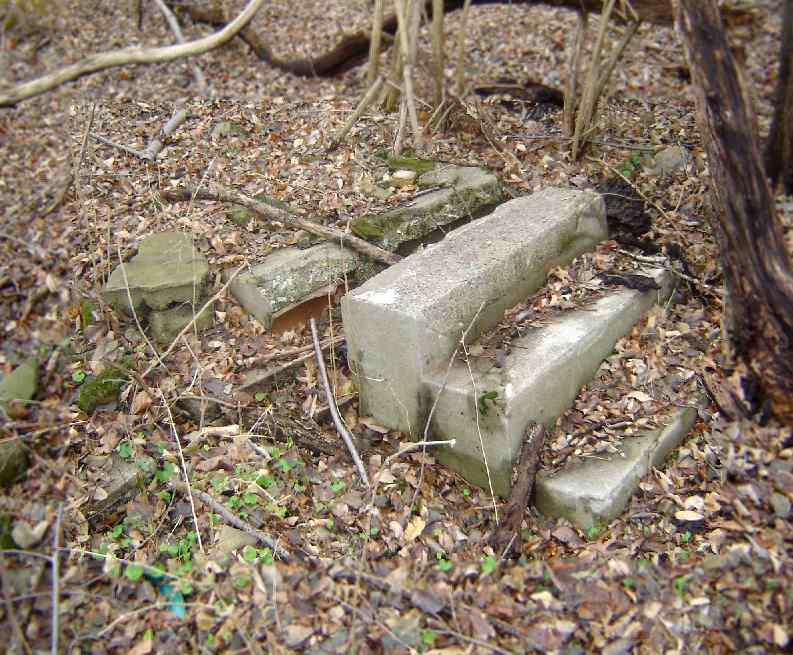
A December 2005 photo by Steven Lindrooth of “the concrete steps [at] the northwest corner of the original hangar.
The outline of the hangar is easy to find (but hard to photograph) as the original slab & foundation are still there, albeit buried in leaves & debris.”
Steven Lindrooth reported in 2006, “There is a 'historical marker' at the corner of Tomlinson & Buck Road in Bryn Athyn, but it is not really close to the original airfield site.
This site is truly the birthplace of rotary wing flight in the United States.”
The site of the original Pitcairn Field is located northeast of the intersection of Huntingdon Pike & Cathedral Road.
____________________________________________________
Pitcairn Field (2nd location), Willow Grove, PA
40.19, -75.14 (North of Philadelphia, PA)
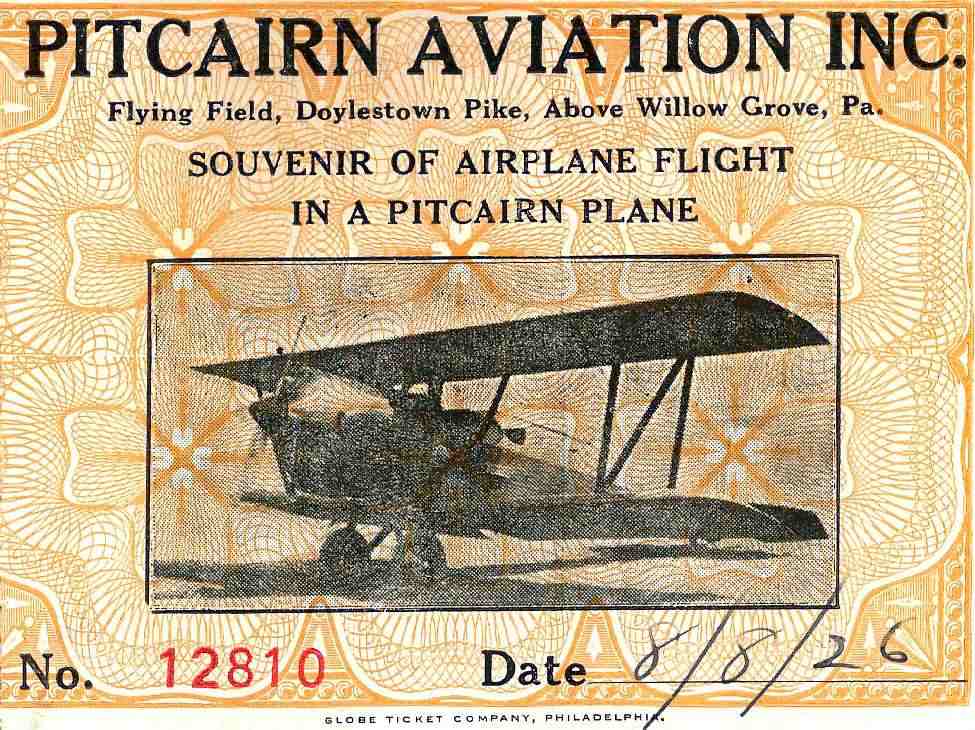
An 8/8/26 ticket (courtesy of Bob Wells) from Bob's mother-in-law, Mary Travis, of her flight in a Pitcairn Aviation biplane.
In 1926, when many people were afraid of airplanes & most considered flying a daredevil sport,
aviation pioneer Harold F. Pitcairn bought a large section of farmland north of Philadelphia,
to relocate his aviation operations from a smaller airfield in nearby Bryn Athyn.
Starting in 1926, Pitcairn developed, built, tested and flew many different aircraft -
most notably the Pitcairn Mailwing & Pitcairn Autogiro.
During his lifetime, Harold Pitcairn & his associates pursued a dream of developing "The Safe Aircraft".
Harold Pitcairn was the 14th recipient of the highest award in American aviation, the Collier Trophy.
The earliest reference which has been located to the Pitcairn Field at this location
was an 8/8/26 ticket (courtesy of Bob Wells) from Bob's mother-in-law, Mary Travis, of her flight in a Pitcairn Aviation biplane
at the “Pitcairn Aviation Inc. Flying Field, Doylestown Pike”.
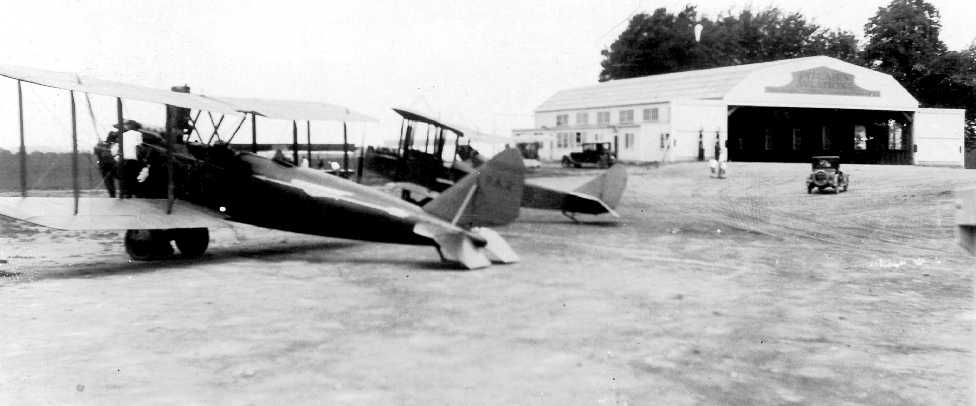
An 8/10/26 photo (courtesy of Bob Wells) of 2 unidentified biplanes in front of the Pitcairn Aviation hangar.

An undated aerial view looking southeast at the “Pitcairn Flying Field”
from the 1926 brochure “The Airplane Pilot” published by Pitcairn Aviation Inc. (courtesy of Tom Heitzman).
It depicted the field as consisting of 190 acres, measuring 4,200' northeast/southwest, with 3 buildings along Doylestown Pike on the east side.

Strangely, an undated aerial view looking southeast at “Pitcairn Airport” from the 1926 Aeronautical Chamber of Commerce of America Aircraft Yearbook (courtesy of Kevin Walsh)
depicted a much larger airfield than the preceding photo, with a considerable expansion of the field's boundary on the northeast side, and the airport's total size having grown to 270 acres.
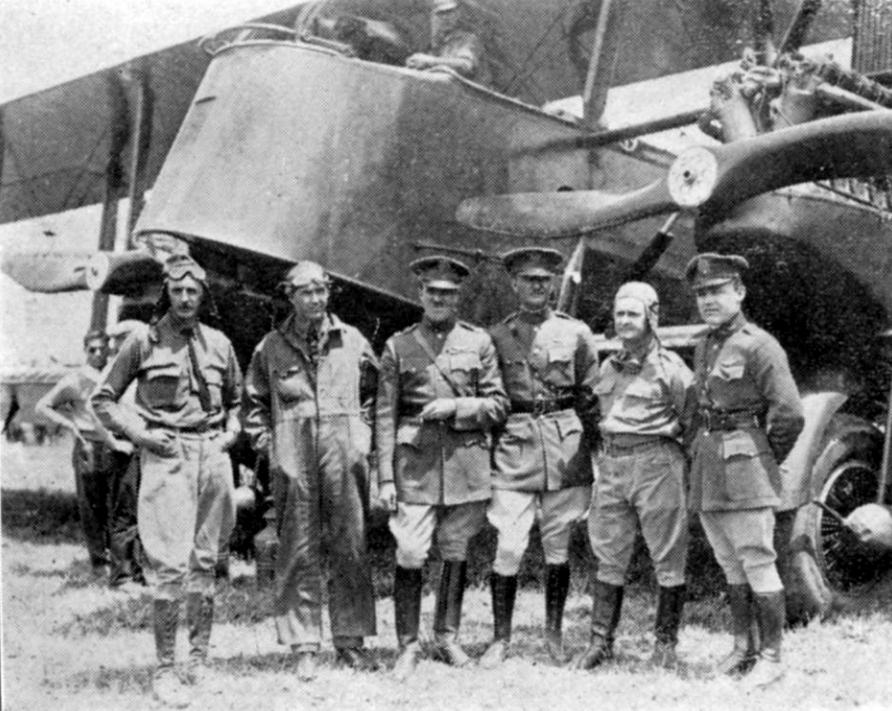
An undated photo from the 1926 brochure “The Airplane Pilot” published by Pitcairn Aviation Inc. (courtesy of Tom Heitzman)
captioned “Fliers from Mitchell Field visit Pitcairn Flying Field. The plane is a Martin bomber.”

A circa 1920s photo of the Pitcairn Aviation hangar (courtesy of Tom Heitzman).

The earliest map depiction which has been located of Pitcairn Field at this spot was on the 1927 Department of Commerce Airway Bulletin (courtesy of David Brooks).
It described Pitcairn Field as a 190 acre irregularly-shaped sod on clay field, with the longest distance being 4,200' northeast/southwest.
The field was said to have 2 wood 120' x 60' hangars on the east side.
In 1927, when Pitcairn won the U.S. Postal Service contract to carry the overnight mail between New York & Atlanta,
he designed the Pitcairn Mailwing, a single-engine, open-cockpit biplane.
Faster, safer, and more efficient than any other aircraft on the market,
the Mailwing was immediately bought as standard equipment by many other airlines.
Pilots loved the aircraft because of its reliability & ease of handling.
When crashes did occur, pilots were often able to walk away with minor injuries due to the Mailwing’s rugged construction.
A series of tragic accidents, coupled with changes in government regulations,
induced Pitcairn to sell his fledgling air mail business to Eastern Air Transport (which would eventually become Eastern Airlines).

“Pitcairn Field”, as depicted in a 1928 report “Location of Airport, Philadelphia” (courtesy of Fred Kelso).
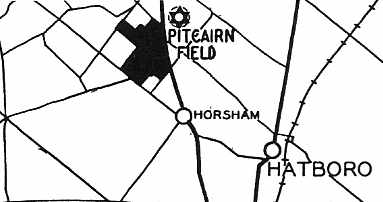
Pitcairn Field, as depicted on the Philly Chamber of Commerce's 1930 "Aviation Map of the Philadelphia Metro District" (courtesy of Tom Beamer).
By 1930 the firm was known as the Autogiro Company of America (AGA), a patent licensee to Buhl, Kellett, Sikorsky, etc.

An undated photo of a Pitcairn Autogiro in US Navy markings.
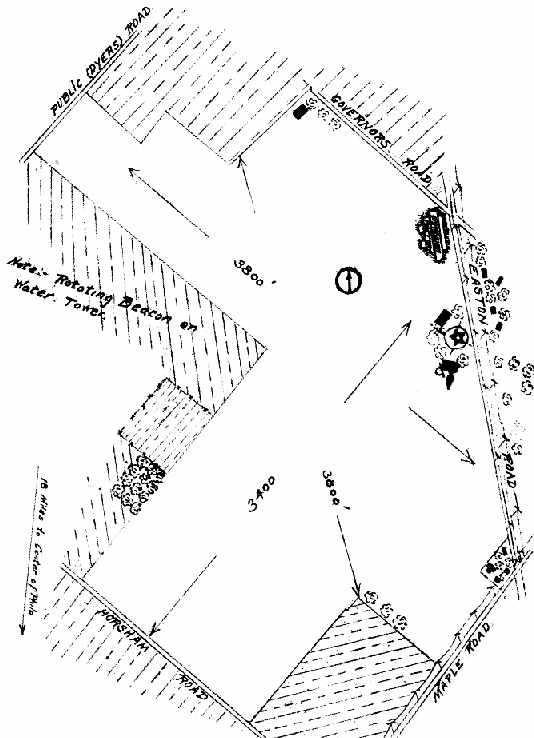
The airfield layout of Pitcairn Field as depicted in the 1930 book "Philadelphia Aeronautical Center of the East"
(courtesy of the George H. Stuebing Collection of the Delaware Valley Historical Aircraft Association).
It described Pitcairn Field as a commercial airport, owned & operated by Pitcairn Aviation of PA, Inc.
The field was said to consist of an irregularly-shaped 190 acre sod field, measuring 3,800' northwest/southeast by 3,400' northeast/southwest.
Two wooden hangars were depicted on the east side of the field, which was said to offer repairs, fuel, and sales & service of Pitcairn airplanes.
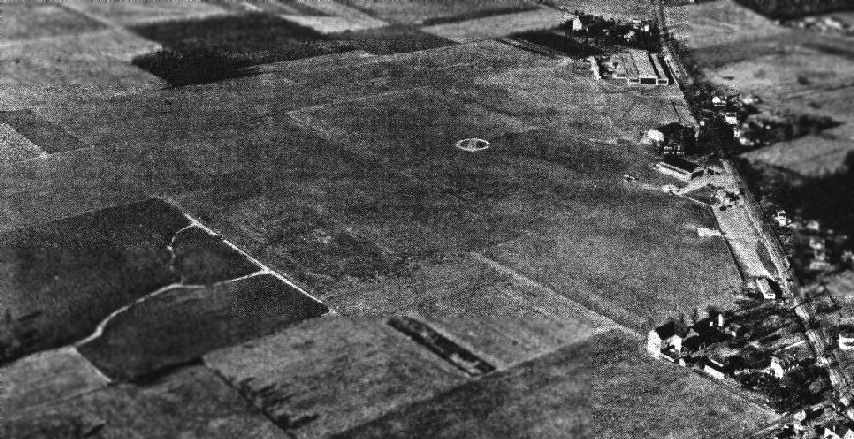
An aerial view looking northwest at Pitcairn Field from the 1930 book "Philadelphia Aeronautical Center of the East"
(courtesy of the George H. Stuebing Collection of the Delaware Valley Historical Aircraft Association).
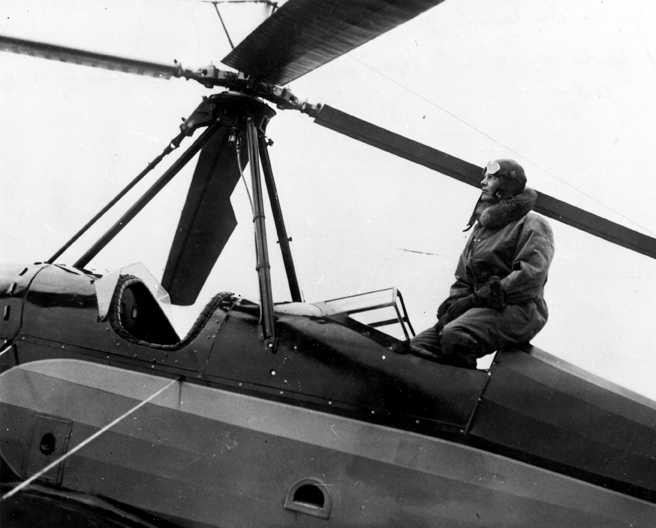
A 4/8/31 photo (courtesy of David Knesovich) of Amelia Earhart with the Pitcairn factory PCA-2 Autogiro at Pitcairn Field, where she set a world altitude record of 18,415 ft.
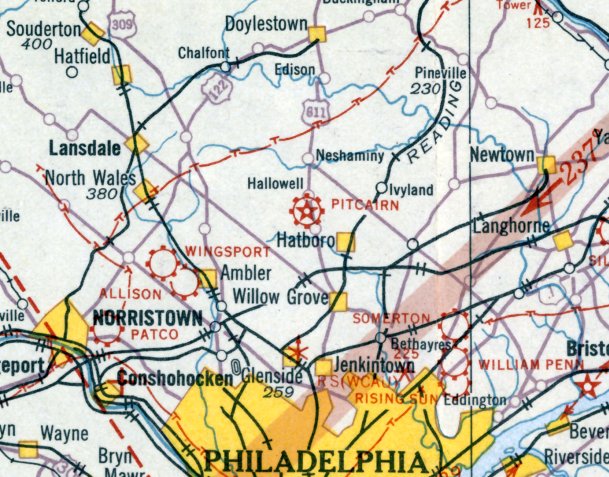
The earliest aeronautical chart depiction which has been located of Pitcairn Field was on the August 1932 NY Sectional Chart.
It depicted Pitcairn as a commercial/municipal airport.
Throughout the 1930s, the Pitcairn team would develop & manufacture many different models of Autogiros at Willow Grove,
perfecting the technology which would later be used in the development of the modern helicopter.
In 1940 a company called G & A (Gliders & Aircraft) took over the Pitcairn Autogiro Company's military contracts.
These included the CG-4A, a troop-carrying glider, and the XO-61, a pusher-type autogiro.

A 4/30/41-6/30/41 photo of the sole Fleetwings Model 33 inside a Pitcairn Field hangar (courtesy of Bill Engle Jr).
Bill observed, “Shown over-nighting in the hangar while stationed at Pitcairn Field to undergo testing by the manufacturer.
During full-aft CG spin testing it entered a flat spin. Test pilot William H. Engle reported that he tried to recover for 25 revolutions then released the anti-spin parachute.
The fix included enlargement of the vertical stabilizer.”

A 6/19/41 photo of the sole Fleetwings Model 33 NX29033 in front of a Pitcairn Field hangar (courtesy of Bill Engle Jr).
Bill observed, “This is the one & only example built and it was hoped to attract an order from the U.S. Army.
Unfortunately engine cooling problems delayed testing to the point where the USA entry into World War II killed off the project.
Here it is undergoing systems checks at Pitcairn Field which are being conducted by the manufacturer.”
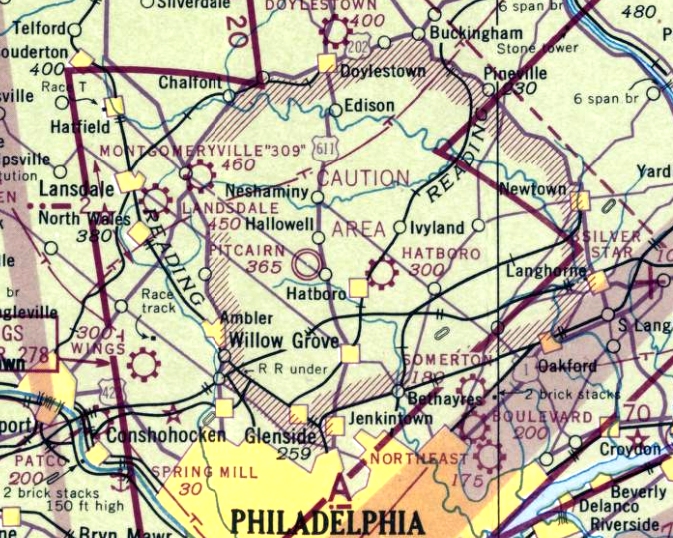
The last aeronautical chart depiction which has been located of Pitcairn Field was on the March 1942 NY Sectional Chart.
It depicted Pitcairn as a commercial/municipal airport.

A circa 1942-44 photo of the 40% scale model of the rare AGA Aviation Corporation XLRG-1 twin-hull amphibious glider at Pitcairn / Willow Grove.
In 1942, for patriotic reasons, Pitcairn reluctantly sold his airfield to the United States Navy to support the war effort.
Two hundred fifty Naval personnel from Mustin Field at the Philadelphia Naval Shipyard took possession of the field that year.
The modest Pitcairn Field was soon replaced with a much larger modern airfield
which extended further toward the northwest, equipped with paved runways, taxiways, and numerous hangars.

An 8/8/42 aerial photo of the newly-built NAS Willow Grove, which had been constructed over the site of Pitcairn Field.
What may have been an original runway of Pitcairn Field is visible at the bottom of the photo
(the narrow strip running northeast/southwest, just south of the new runways).
The former Pitcain hangars were visible along the east side of the field.
By 1943, the Firestone company had absorbed G & A Aircraft.
It has not been determined if they continued to operate at Willow Grove, or if Firestone's aircraft operations were relocated elsewhere.
Firestone continued to develop & a build a handful of rotary wing aircraft until suspending operations in 1947.
A 1958 aerial photo showed that the former Pitcairn Field runway had been removed at some point between 1942-58.
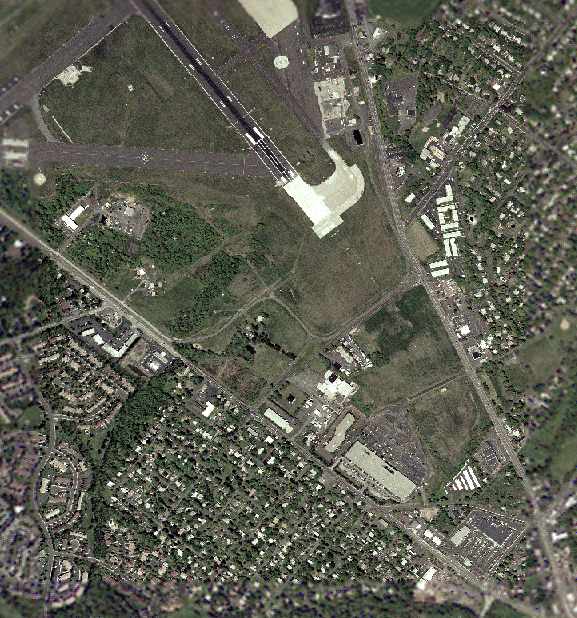
A 2001 USGS aerial photo showed the much larger airfield of NAS Willow Grove had covered the site of Pitcairn Field (at the southeast corner of the Willow Grove airfield).
Steven Lindrooth reported in 2006, “The Pitcairn factory & at least one other building still stand & are in use.
The original factory is now the Tinius Olsen Machining Company.
The Kellet Autogiro factory was across the street from Pitcairn Field.
It suffered a fire a few years ago, but I believe at least some of it still stands & is in use.”
The site of Pitcairn Field is located west of the intersection of Maple Road & Easton Road,
at the very southeast corner of the present-day NAS JRB Willow Grove property.
____________________________________________________
NAS Willow Grove, Willow Grove, PA
40.19, -75.14 (North of Philadelphia, PA)

An 8/8/42 aerial photo of the newly-built NAS Willow Grove.
In 1942, for patriotic reasons, Harold Pitcairn reluctantly sold his airfield to the United States Navy to support the war effort.
Two hundred fifty Naval personnel from Mustin Field at the Philadelphia Naval Shipyard took possession of the field that year.
The modest Pitcairn Field was soon replaced with a much larger modern airfield
which extended further toward the northwest, equipped with paved runways, taxiways, and numerous hangars.
In January 1943, the field was officially commissioned the United States Naval Air Station Willow Grove.
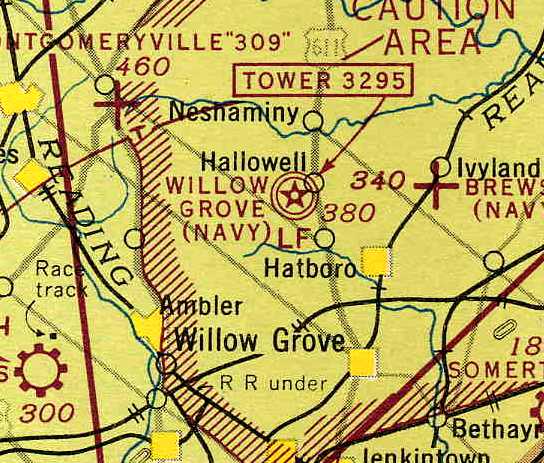
"Willow Grove (Navy)", as depicted on the 1943 NY Sectional Chart (courtesy of Chris Kennedy).

A 5/8/44 aerial view looking north at NAS Willow Grove from the 1945 AAF Airfield Directory (courtesy of Scott Murdock).
It depicted the field as having 3 paved runways, with hangars along the east side.
The 1945 AAF Airfield Directory (courtesy of Scott Murdock) described NAS Willow Grove
as a 474 acre irregularly-shaped property having 3 limestone runways, the longest being the 4,000' northeast/southwest & northwest/southeast strips.
The field was said to have a single 240' x 200' concrete & wood hangar,
and to be owned & operated by the U.S. Navy.
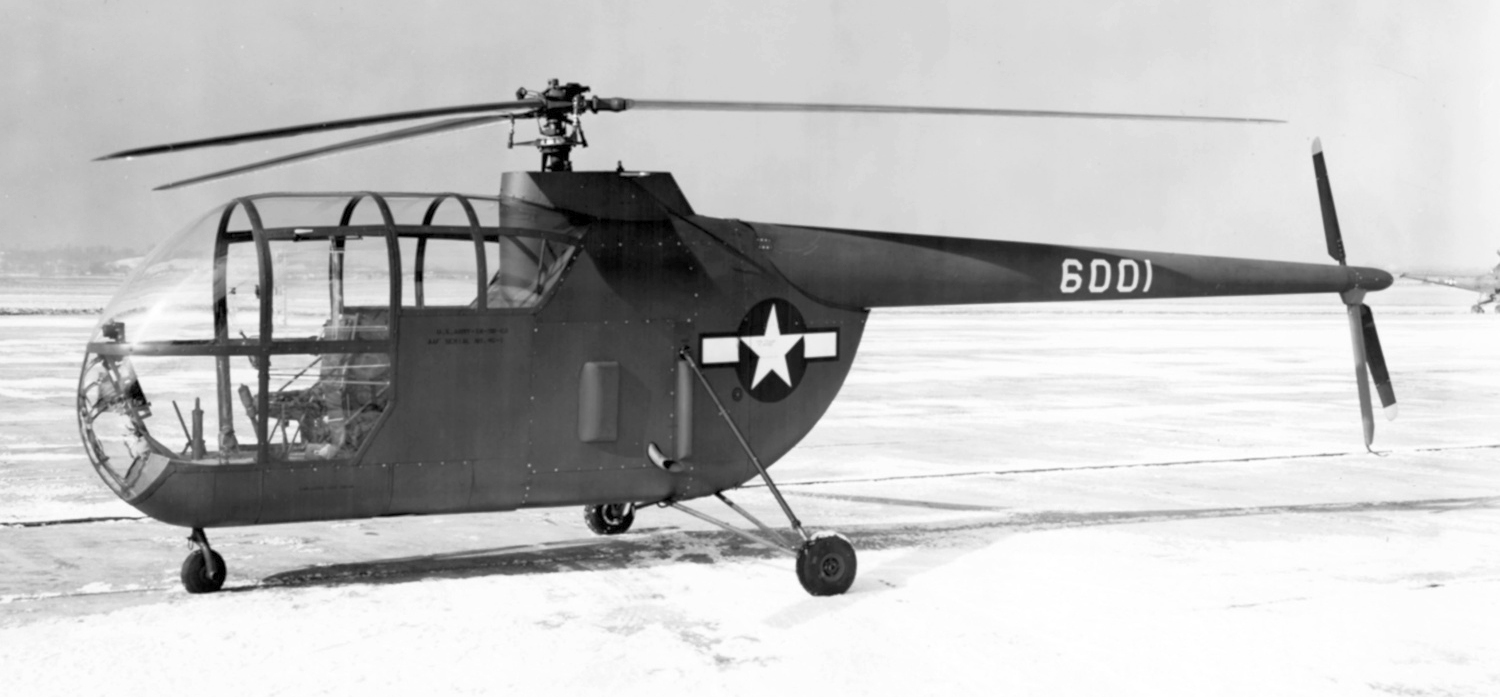
A March-December 1946 photo of a rare G&A Aircraft XR-9B, 46-1, seen on a snowy NAS Willow Grove ramp.

A March-December 1946 photo by Rudy Arnold of a rare G&A Aircraft XR-9B, 46-1, being flown at NAS Willow Grove.
Note the pilot's lack of any protective headgear, or even a headset.
Following WW2, NAS Willow Grove was designated a Naval Air Reserve Training Station.
Training & operation support activities increased during the Korean War.

A 10/27/50 aerial view depicted NAS Willow Grove in its original (WW2 era) smaller configuration.

The 1952 USGS topo map depicted NAS Willow Grove in its original (WW2 era) smaller configuration.

The last depiction which has been located of NAS Willow Grove in its original (WW2 era) smaller configuration was a diagram from the 1953 National Model Airplane Championships (courtesy of Jack Kenton).
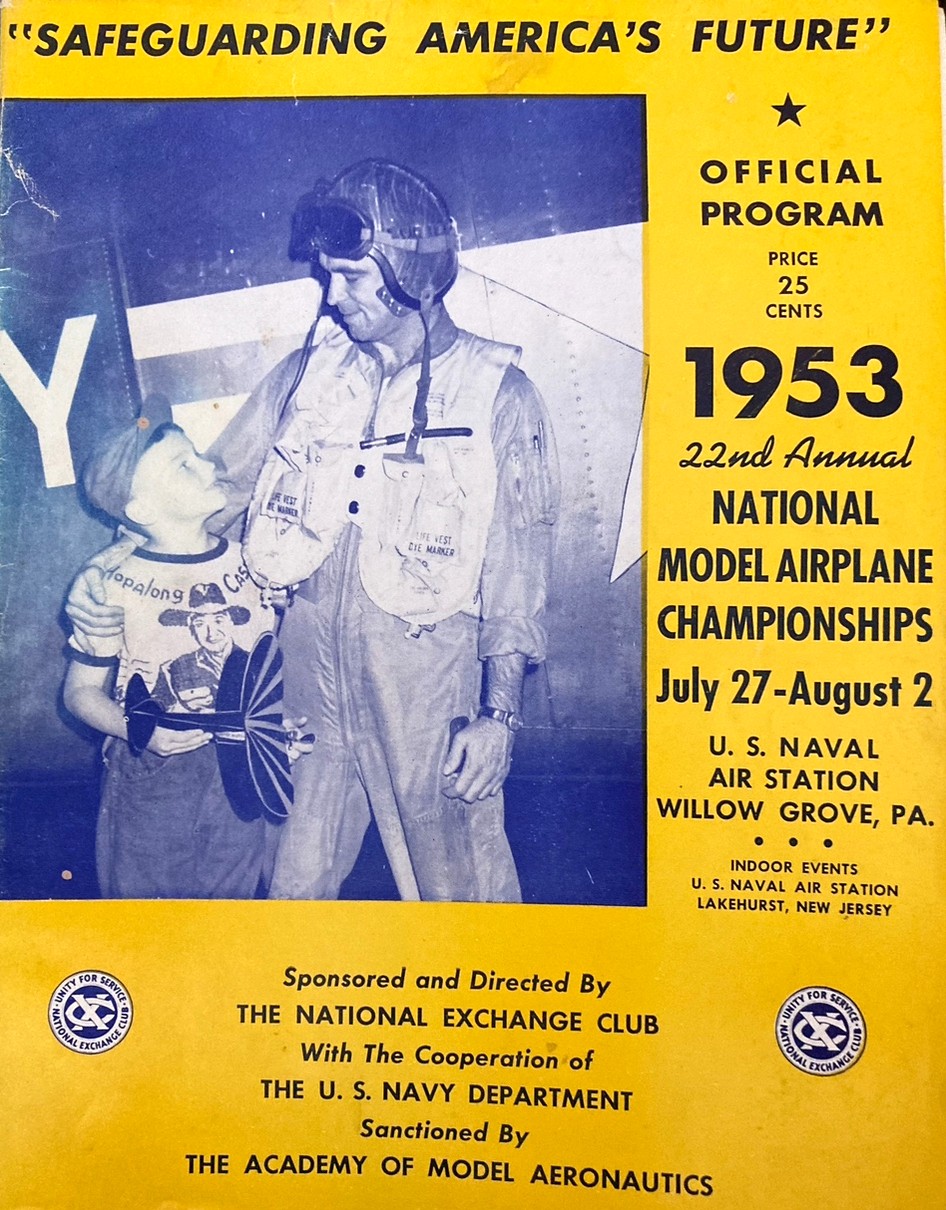
The cover of the 1953 National Model Airplane Championships (courtesy of Jack Kenton) held at NAS Willow Grove.
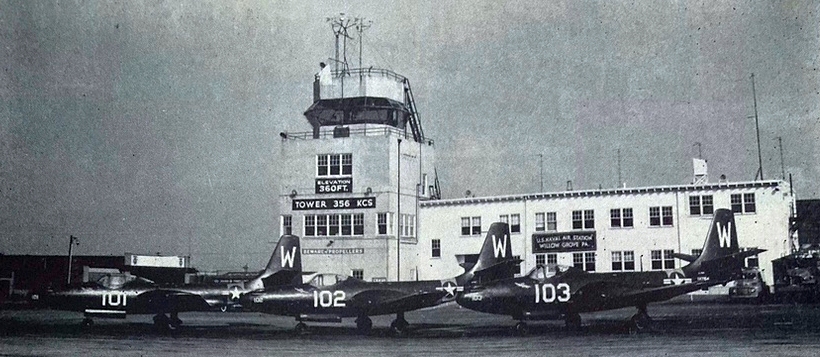
An undated photo of 3 McDonnell FH-1 Phantoms in front of Willow Grove's control tower, from the 1953 National Model Airplane Championships program (courtesy of Jack Kenton).
In 1957, the Navy purchased additional land, bringing NAS Willow Grove to its eventual total of 1,100 acres.
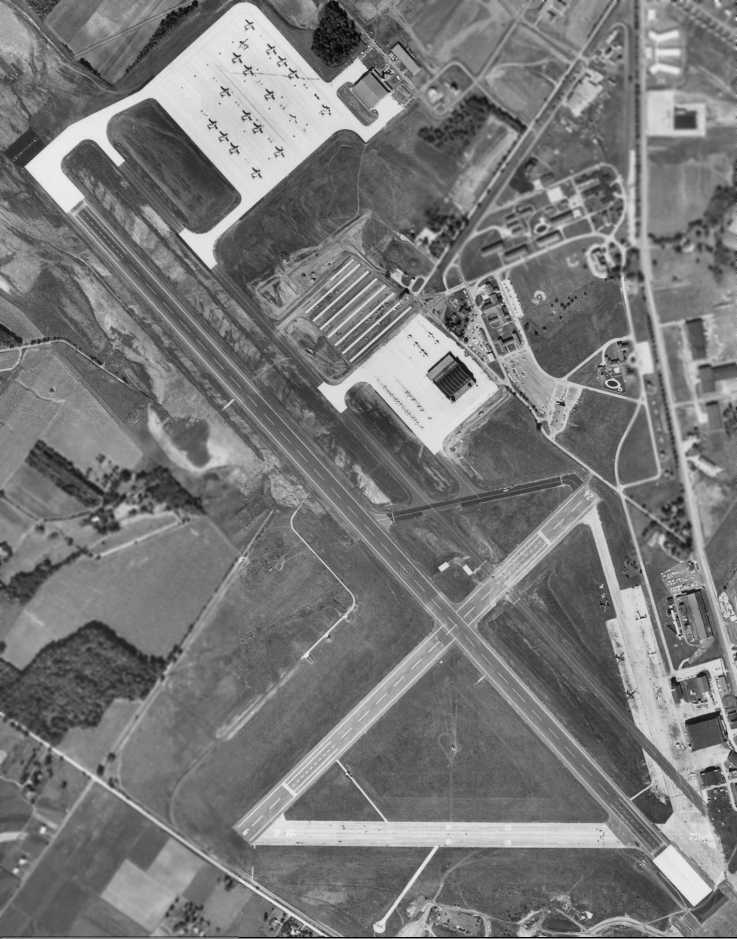
A 10/2/58 aerial view of Willow Grove depicted a considerable expansion of the base,
with the lengthened primary runway, and a large new ramp on the north side.

The 1959 Philadelphia Local Aeronautical Chart depicted Willow Grove as having an 8,000' paved runway.

A 7/30/61 photo of Navy VF-161/CVG-16 McDonnell F3H-2 Demon 136969 C/n 162 at the 1961 NAS Willow Grove Open House.
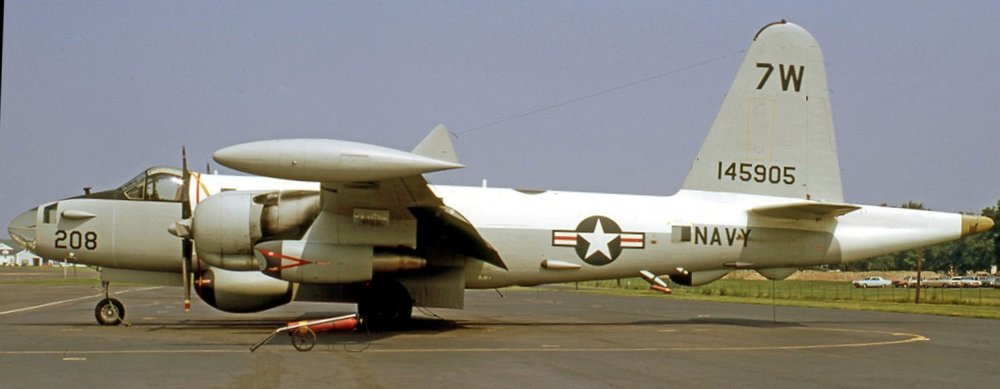
A 1970 photo of a Lockheed SP-2H Neptune at NAS Willow Grove.
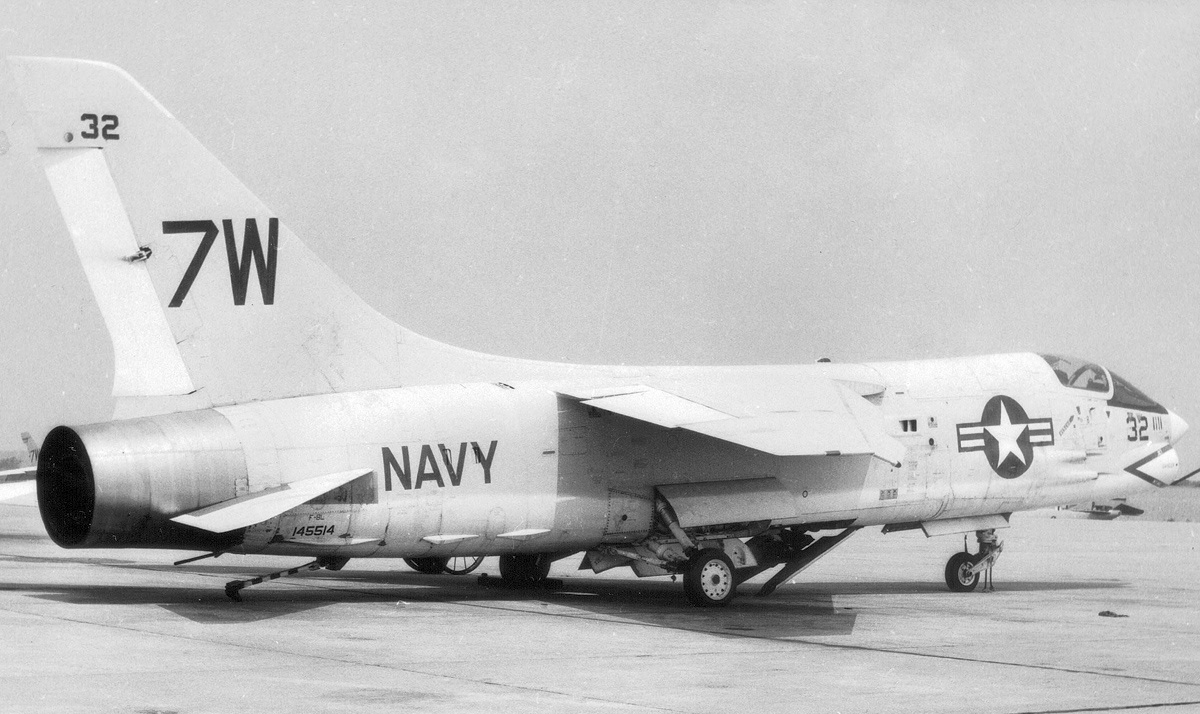
A July 1970 photo of Navy Reserve Vought F-8L Crusader, 145514, C/n 478, on the NAS Willow Grove ramp.

A 8/17/71 aerial view of Willow Grove depicted a large number of aircraft parked over ramps & taxiways.
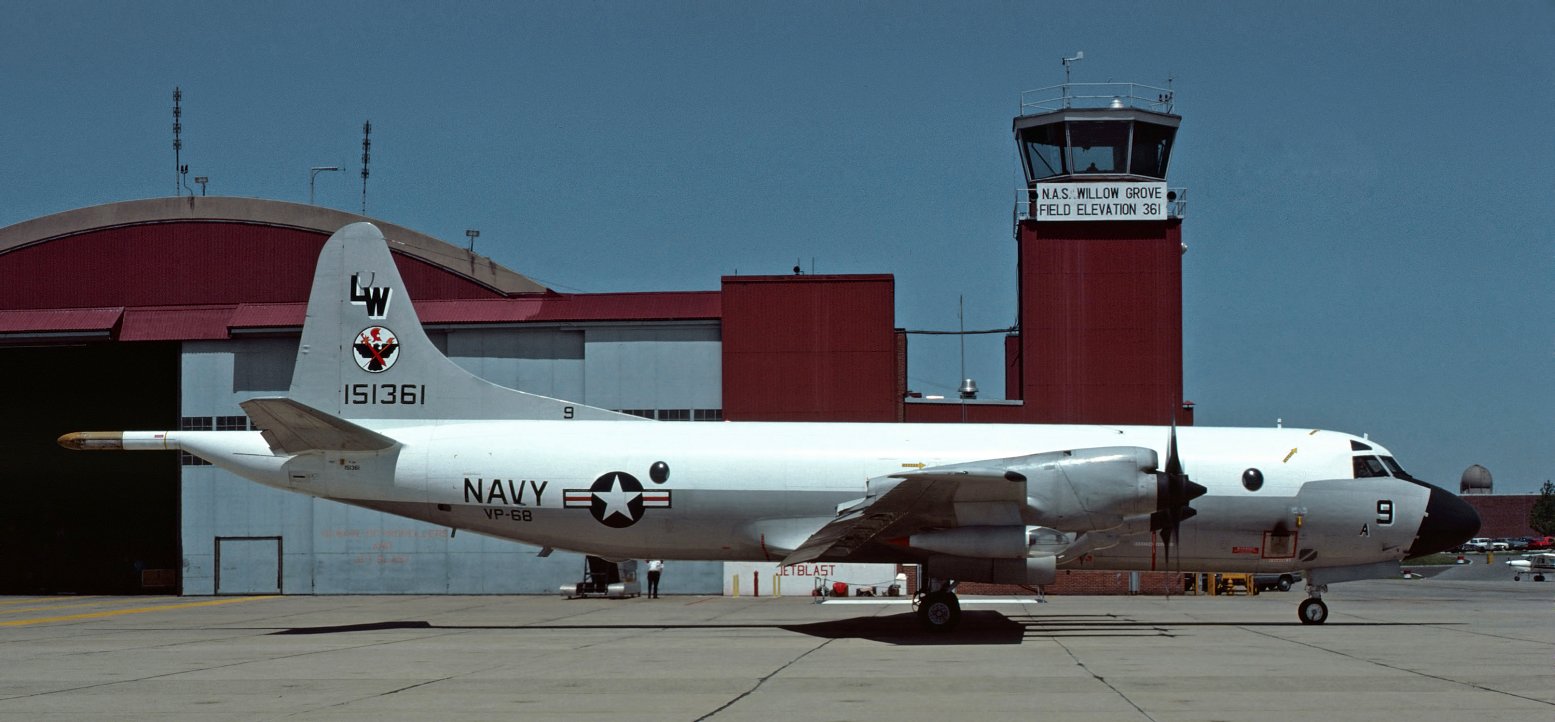
A July 1977 photo of a Lockheed P-3A Orion of the VP-68 Blackhawks in front of the the NAS Willow Grove control tower.

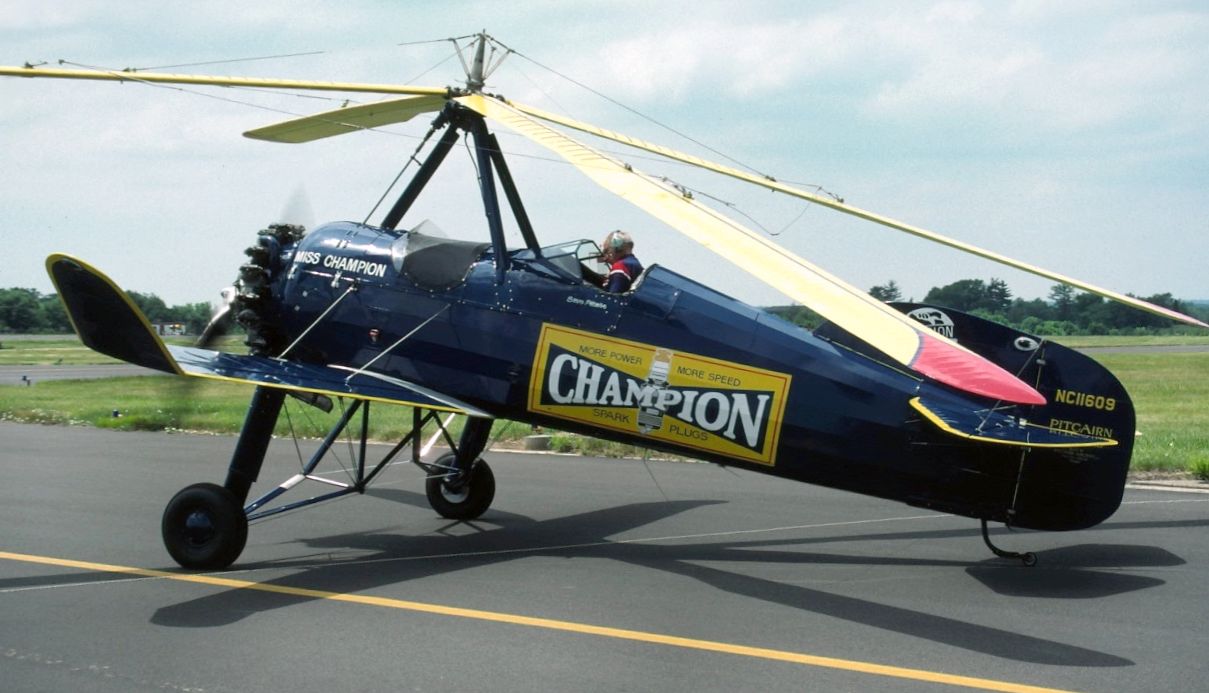
A June 1982 photo of N11609, a 1931 Pitcairn-Cierva PCA-2, serial #B-27, 'Miss Champion',
operating out of the airfield where she was built 61 years previously, with Steve Pitcairn at the controls.
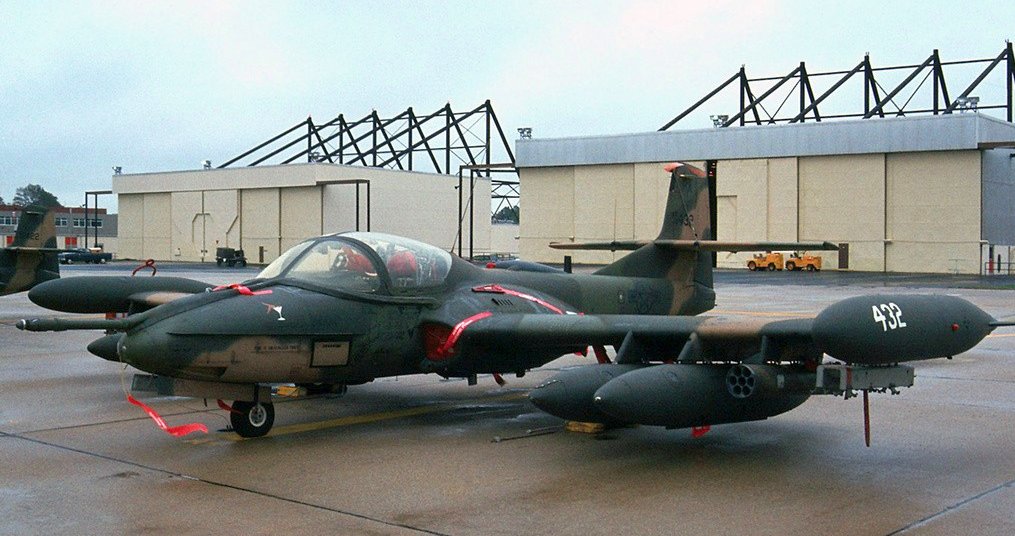
A 1983 photo of a Cessna OA-37B Dragonfly in front of NAS Willow Grove hangars.
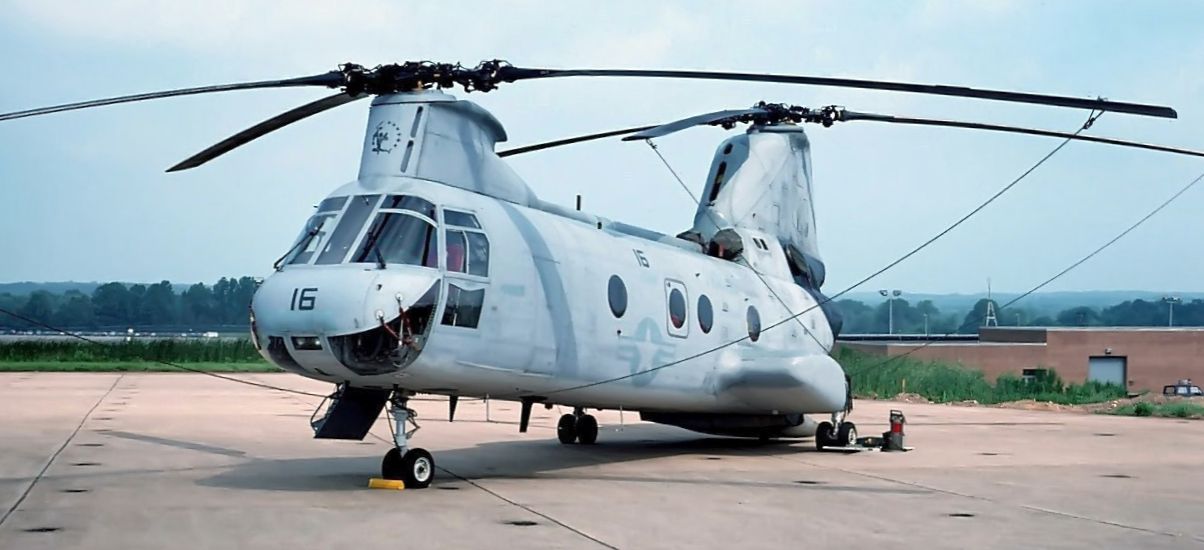
A July 1989 photo of BuNo 151952, a Boeing Vertol HH-46A Sea Knight, serial #2102, at Willow Grove.
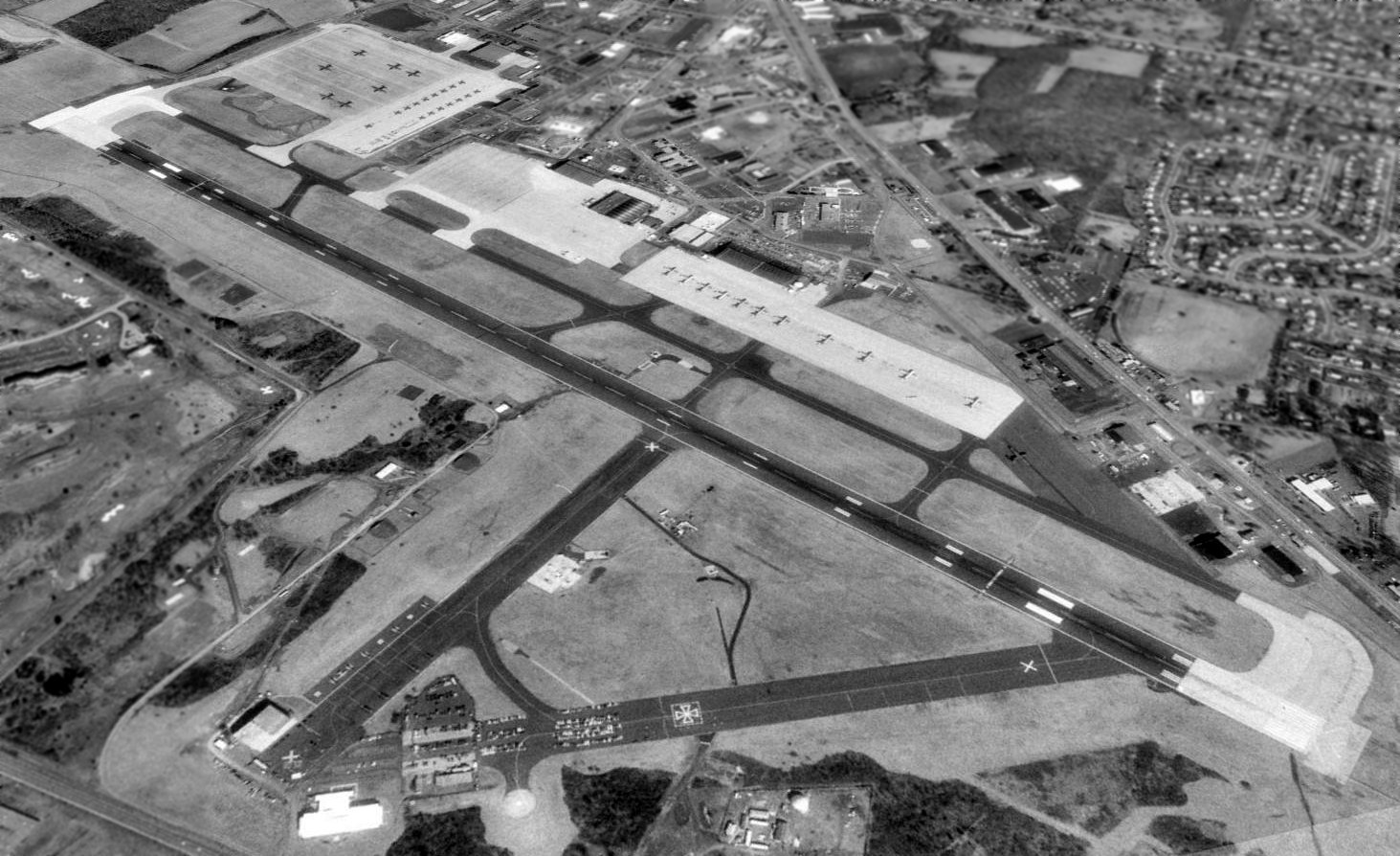
A 1992 USGS aerial view looking northeast showed Willow Grove to be a well-used base, with Navy Reserve P-3 Orions on the south ramp,
and Air Force Reserve C-130 Hercules & A-10 Thunderbolts on the north ramp.
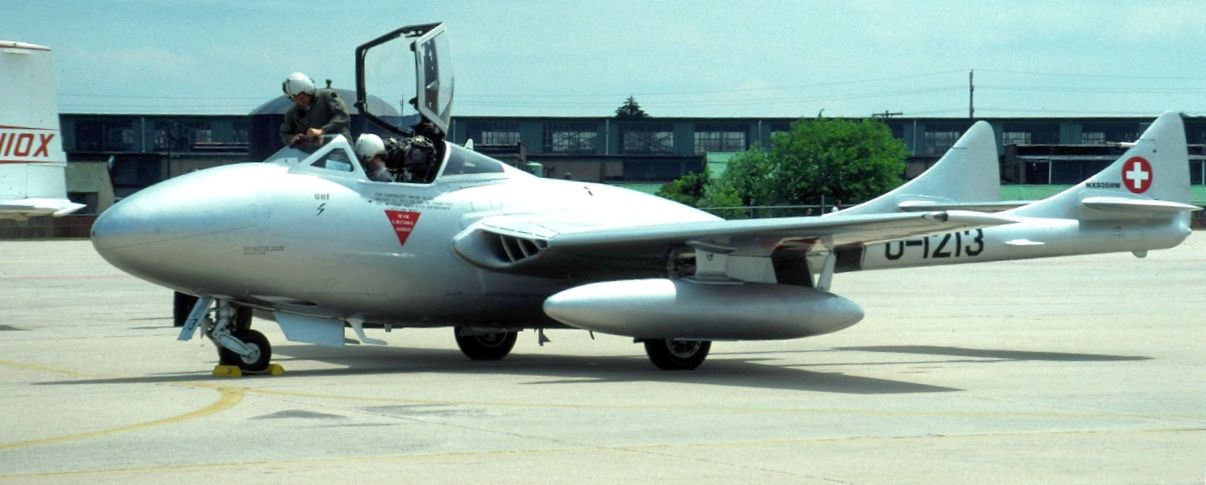
A June 1992 photo of N935HW, a 1958 De Havilland (F+W Emmen) Vampire T55 (DH-115), serial #973, at Willow Grove.
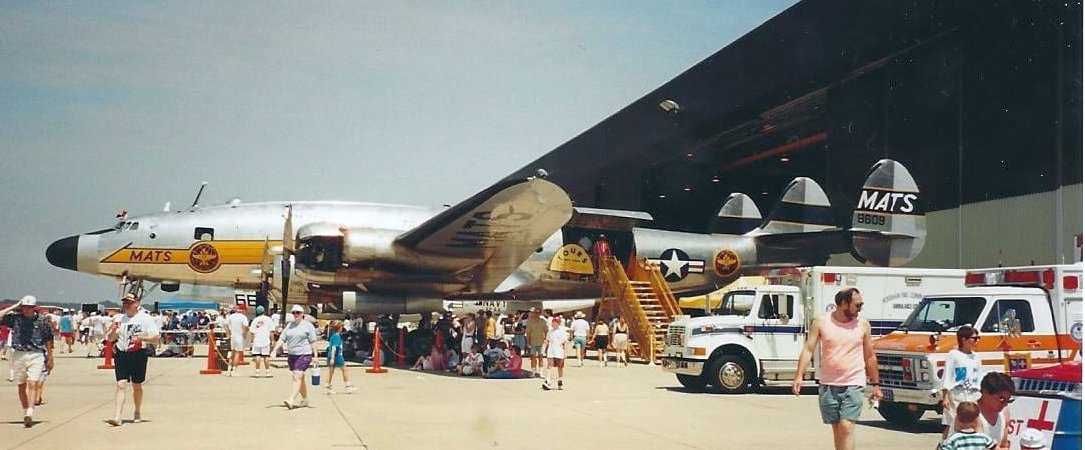
A 6/19/94 photo of a Lockheed Constellation at a NAS Willow Grove airshow.

A 6/25/99 photo of Air Force Reserve Fairchild Republic A-10A Thunderbolt, 79-0219, C/n A10-483, taxiing at NAS Willow Grove, armed with an AGM-65 Maverick missile.
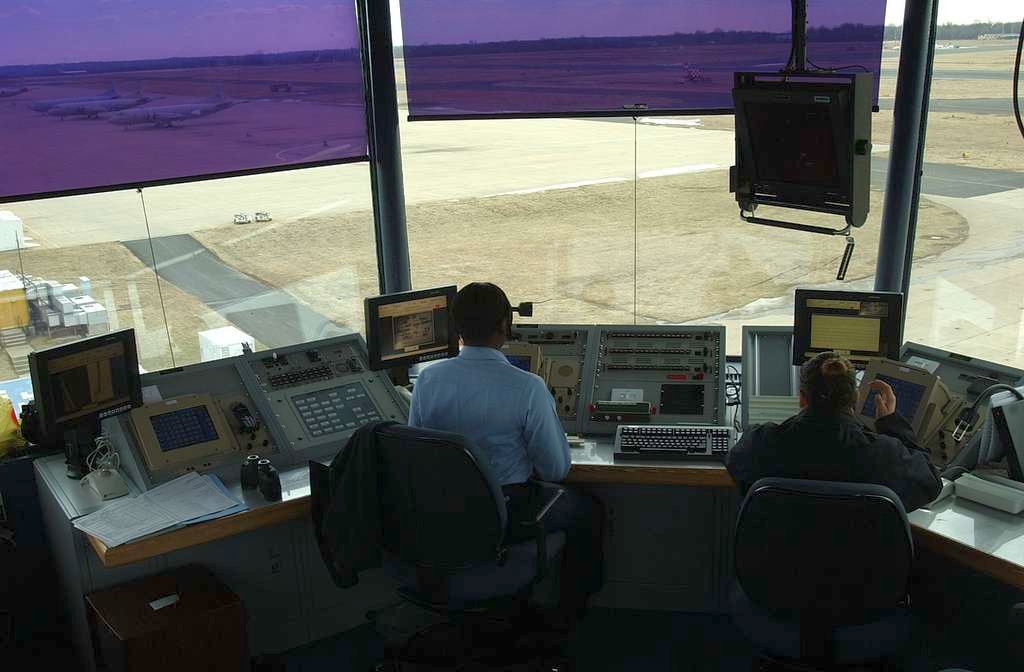
A 2/21/04 USN photo of controllers inside the NAS Willow Grove control tower, with Navy P-3 Orions visible on the ramp.
As part of Willow Grove's recruitment efforts, the base was an annual host to one of the largest air shows on the East Coast until 2006.

A 2007 photo of the Sikorsky VH-3D “Marine One” presidential helicopter at Willow Grove, with Navy P-3 Orions visible in the background.
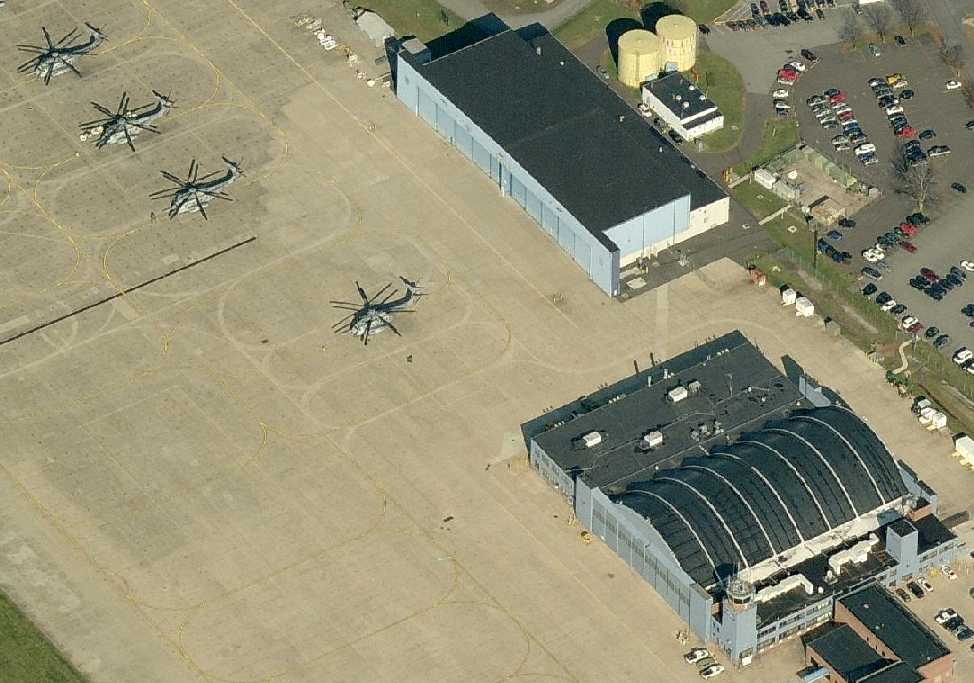
A circa 2008 aerial view looking north at CH-53E Sea Stallions of Marine Reserve Squadron HMH-772, parked near the Willow Grove control tower.
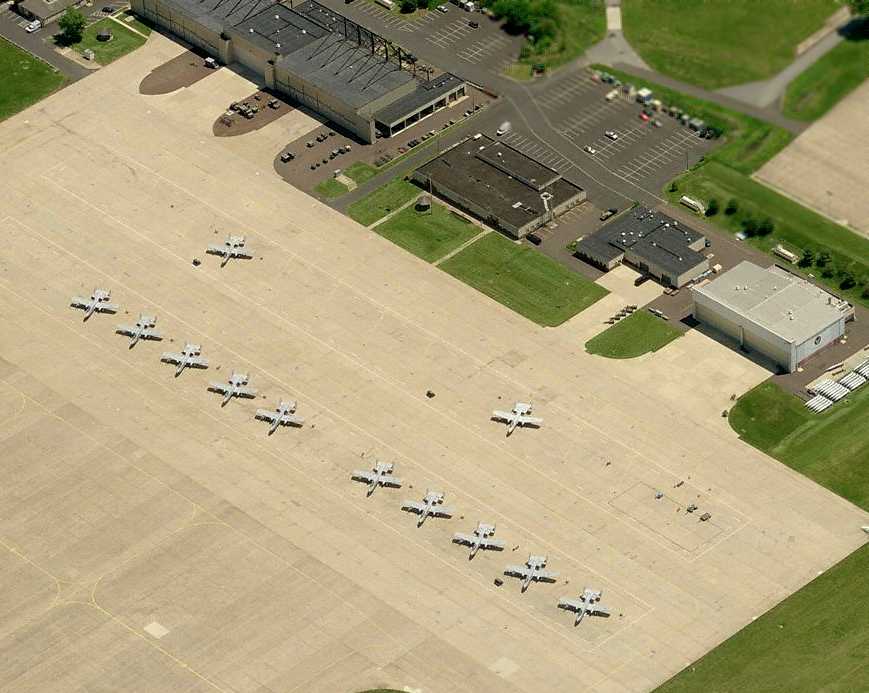
A circa 2008 aerial view looking east at A-10 Thunderbolts of the Air Force Reserve's 111th Fighter Wing on Willow Grove's north ramp.
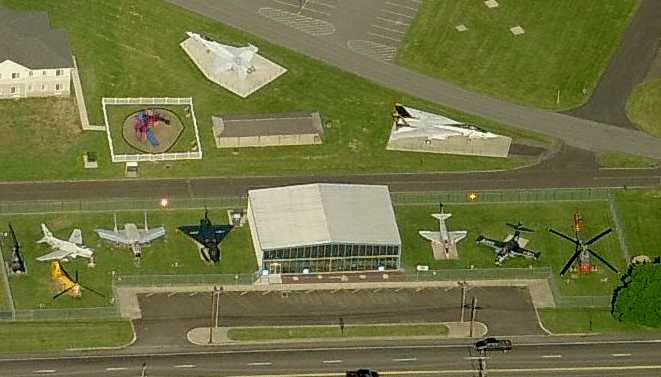
A circa 2008 aerial view looking west at the outdoor aircraft display of Willow Grove's Wings of Freedom Museum,
including an FJ-4B Fury, F7U-3 Cutlass, YF2Y-1 Sea Dart, F/A-18 Hornet, F-14 Tomcat, A-4M Skyhawk, F9F-2 Panther, and UH-34J Sea Bat.
On 5/28/06, the Base Realignment & Closure commission recommended that NAS Willow Grove be closed as part of the 2005 BRAC round,
that the tenant Air Force Reserve Command airlift wing be deactivated
and that Navy Reserve & Marine Corps Reserve flying units relocate to McGuire AFB as tenant units.
On 9/30/07, pursuant to direction of BRAC 2005, the Air Force Reserve Command disestablished the 913th Airlift Wing at Willow Grove,
redistributing its C-130 Hercules aircraft to other active duty Air Force & Air Force Reserve units.
On 2/29/08, the Commonwealth of Pennsylvania released a report detailing a plan for a Joint Interagency Installation (JII),
with a mission of national defense, homeland security & emergency preparedness.
However, on 11/13/09, Pennsylvania dropped the plan for the JII based on the gradual removal of the 111th Fighter Wing.
Future plans for the base include using a portion for the National Guard & reserve troops, but without any aviation usage.

The last photo which has been located showing Willow Grove while still operational was a 4/12/10 aerial view looking northwest.
Most of the aircraft had left, with the only remaining aircraft being a single A-10 Thunderbolt on the Air Force ramp, 4 CH-53Es on the Marine ramp,
one C-9B Skytrain on the Navy ramp, and 4 flying club light light aircraft on the south ramp.

The last aeronautical chart depiction which has been located showing Willow Grove while still operational was on the February 2011 Philadelphia Local Aeronautical Chart.
It depicted Willow Grove as having a single 8,000' paved northwest/southeast runway, a control tower, and a hashed-out NDB beacon on the south end of the runway.
The massive Willow Grove airfield shut down on 3/31/11. VR-64, VR-52, and a C-12 detachment were transferred to McGuire AFB.
The 111th Fighter Wing lost all its A-10 Thunderbolts to other ANG Squadrons under BRAC;
the unit will take on a new role (so far undecided) in the near future, but will no longer operate aircraft.
As of 2011, a group called “Save Willow Grove Airfield” described themselves as “a Horsham organization made up of Horsham & surrounding area residents & businesses
that recognize the emergency preparedness & economic impact values that a general aviation (no scheduled passenger or cargo service) airport would bring to Horsham Township.
Our purpose is to ensure that an aviation facility is included in one of the three reuse proposals
so that a fair evaluation can be made of the alternatives by the HLRA & Horsham residents.”
Unfortunately that was not to be, as the 7/28/11 issue of PhillyBurbs had an article entitled “Authority says no to runway”,
which said “Whatever moves into the nearly 900 acres at the Willow Grove Naval Air Station won’t be arriving from the skies.
On Wednesday, the Horsham Land Reuse Authority shot down both applications to keep the nearly 8,000-foot runway open for a general aviation airfield.”
A local resident observed, “Airport proposals were killed, despite an incredibly thorough feasibility study from the Bucks County Airport Authority that no other applicant provided.
Time for me to move. Never before have I seen a community so vehemently opposed to general aviation.”
Final closure of NAS JRB Willow Grove was scheduled for 9/15/11.
The Pennsylvania Air National Guard is expected to take custody, and the facility will be designated Willow Grove Air National Guard Base.
A handful of National Guard & Army Reserve soldiers will remain, and the Air Force will maintain administrative offices on the property.
The surplus land containing the runways will be turned over to Horsham Township for redevelopment;
Horsham & other adjoining townships in Montgomery & Bucks Counties are currently debating the nature of this redevelopment.
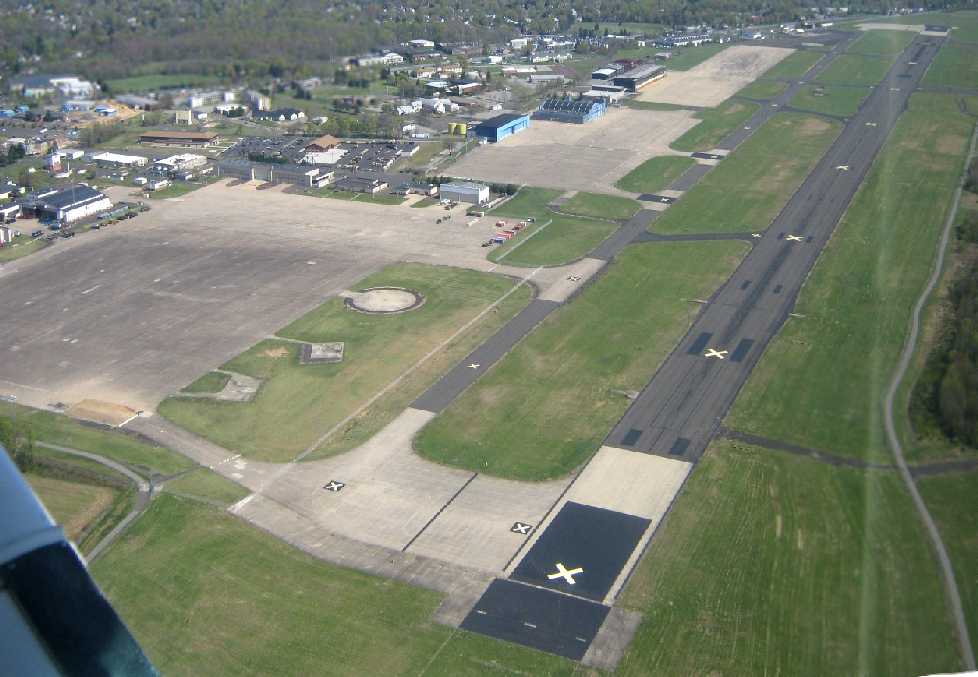
A 4/13/12 aerial view by Mike Schatz looking southeast at NAS Willow Grove, “taken from my Cessna 152 at about 1,000' AGL.
NAS Willow Grove which closed for good last year. Bucks & Montgomery Counties are most likely going to build homes on the site.
PA Air National Guard will stay (north side of the field) but will have a non-flying mission.
There is new construction on the Air National Guard side of the base. It looks like they are adding to the building which was/is the 111th FW Headquarters building.
I assume it is for the carry on a non-flying mission that the wing will perform.”
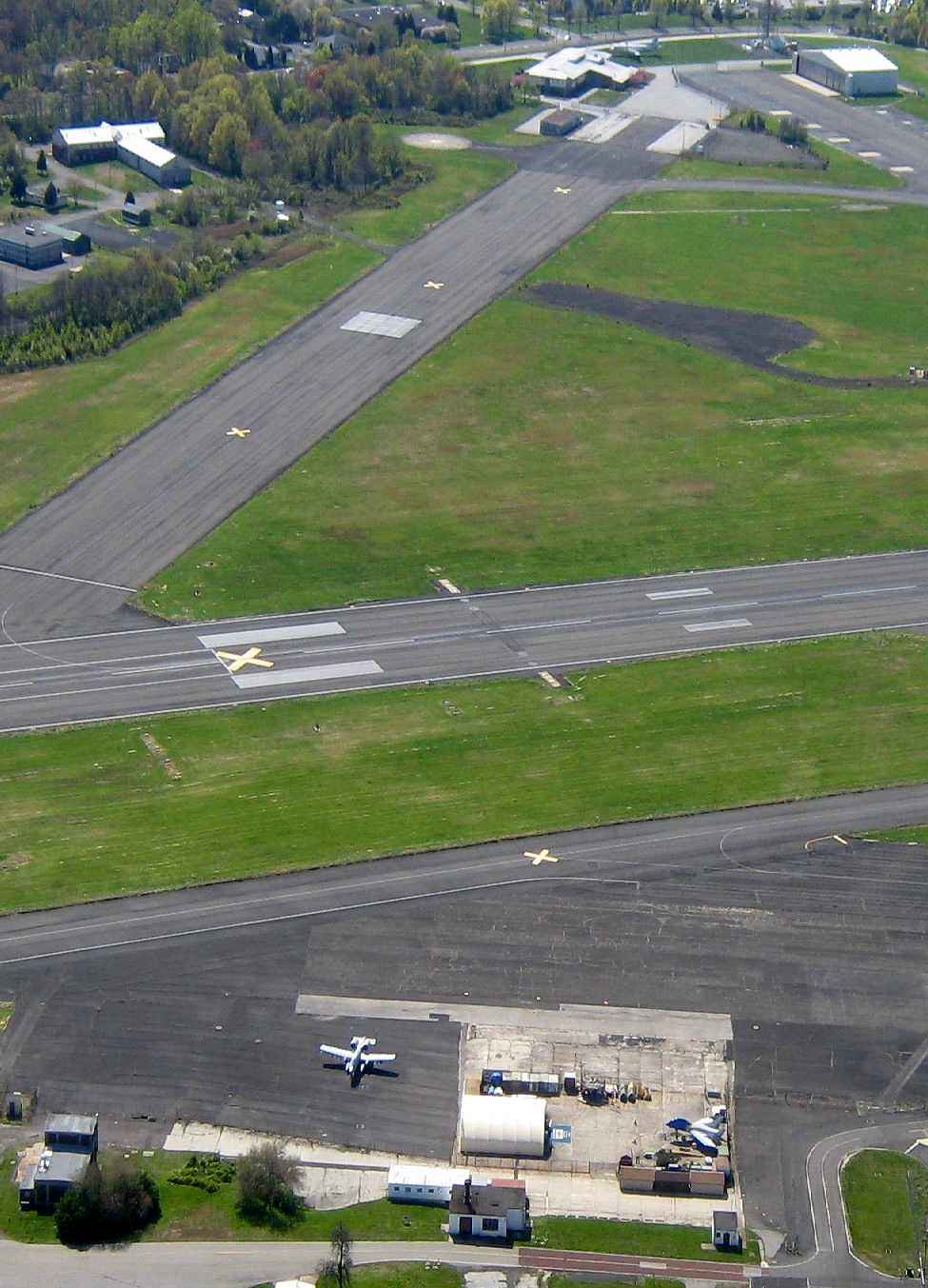
A 4/13/12 aerial view by Mike Schatz looking west at NAS Willow Grove, “taken from my Cessna 152 at about 1,000' AGL.”
It shows 3 of the aircraft which remain at the airfield: an A-10 Thunderbolt & F7U Cutlass in the foreground, and a P-3 Orion at the top-right.
Mike observed, “The Delaware Valley Historic Aircraft Society is still there along the Route 611 side of the base
and their restoration area can be seen in the pics where the A-10 & Vought Cutlass are located.”

A March 2014 photo by Ron Plante of the exotic & rare Convair YF2Y-1 Sea Dart (the world's only supersonic seaplane) on display at Willow Grove's Wings of Freedom Museum.

A March 2014 photo by Ron Plante of former NAS Willow Grove Headquarters building.
Ron reported, “Unlike Warminster, the buildings & runways appear to be totally intact, not sure how long that will last.”
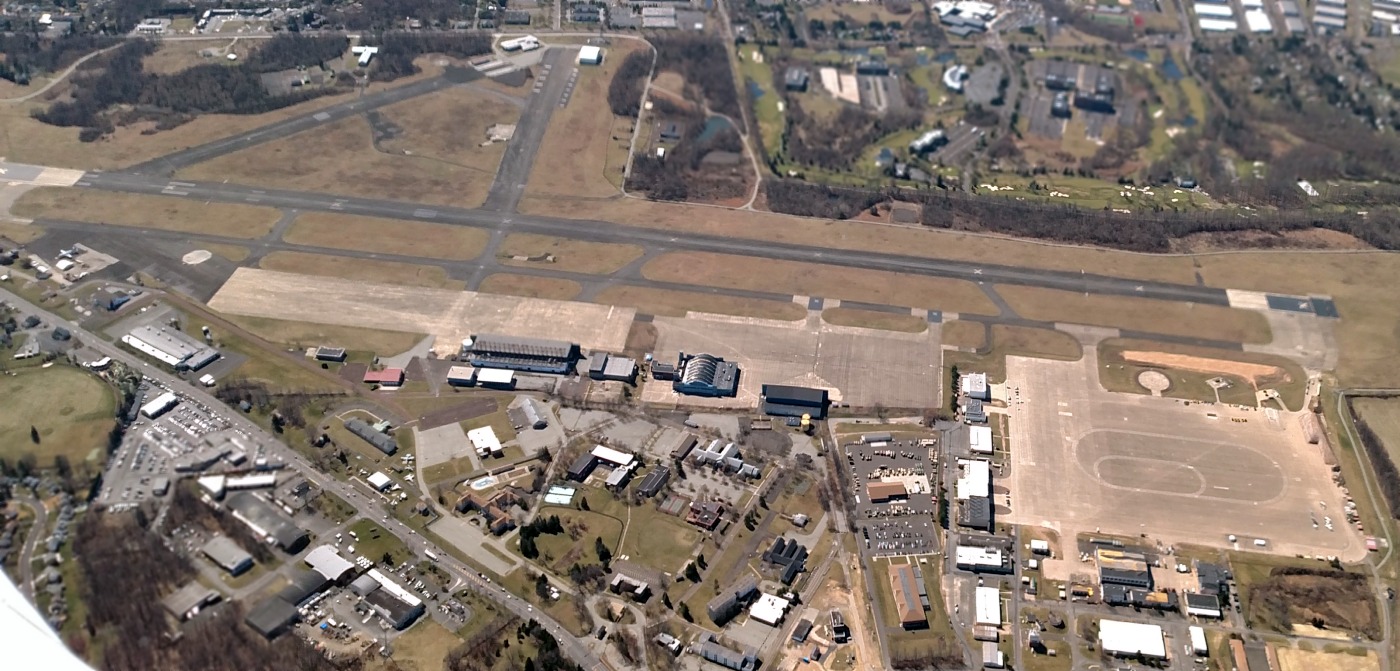
A 3/6/17 aerial view by Dennis Boykin looking southwest at NAS Willow Grove.
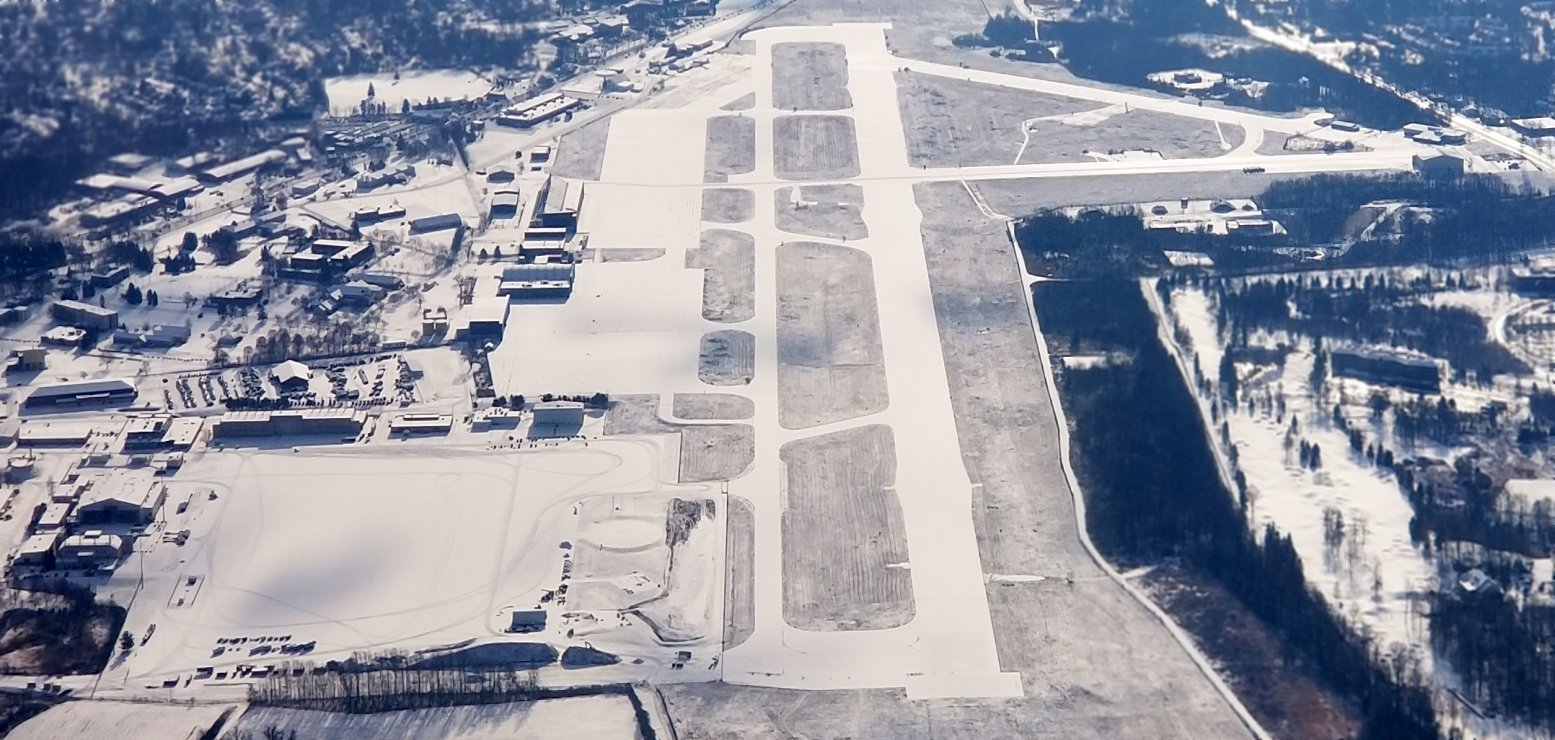
A 12/14/17 aerial view by Graeme Smith looking southeast at the former NAS Willow Grove. Amazing to see this much taxpayer-paid aviation infrastructure just going to waste.

A 5/26/18 aerial view by Tom Doblmaier looking east at the former Willow Grove control tower & hangars, all now going to waste.

A 2021 aerial view by Edward Figuli looking northwest along the former NAS Willow Grove main runway.
With the entire Philly metro area served by only a single airline-service airport (Philadelphia International, on the opposite side of the metro area),
what a shame to not reuse the massive aviation infrastructure at Willow Grove as a second commercial airport.
It is amazing that the Philadelphia metro area has lost 3 huge Navy employers in the past 2 decades: the Philly Navy Yard, NAWC Warminster, and now NAS Willow Grove.
____________________________________________________
Or if you prefer to contact me directly concerning a contribution (for a mailing address to send a check),
please contact me at: paulandterryfreeman@gmail.com
If you enjoy this web site, please support it with a financial contribution.
____________________________________________________
This site covers airfields in all 50 states.